
Home » Travel Guides » France » 15 Best Things to Do in Calais (France)

15 Best Things to Do in Calais (France)
A major port for centuries, and France’s historic gateway to England, Calais hasn’t always been in the news for the right reasons. Many people rush by on their way to Paris or more picturesque places in northern France. But if you have an open mind there’s a lot to keep you occupied.
The ever-present belfry is a UNESCO site, and just opposite is one of Auguste Rodin’s most acclaimed works. You can immerse yourself in the history of Calais’ lace mills and go underground in a preserved Nazi bunker.
Lets explore the best things to do in Calais :
1. Town Hall

Calais’ town hall has a 75-metre-high belfry that is part of a UNESCO site straddling the French and Belgian border, made up of towers within the old Duchy of Burgundy and the historic County of Flanders.
It may look historic from a distance, but it’s actually from the 20th-century, designed in a renaissance revival style.
Inside you can see working models of the Port of Calais, and you can also catch a lift to the observation platform in the belfry for far-reaching vistas.
Most agree that the belfry’s chimes are among the most beautiful in France.
2. Burghers of Calais

In front of the Town Hall on the edge of the Parc Saint-Pierre is one of Auguste Rodin’s best-known works.
It was unveiled in 1895 and was designed to honour the self-sacrifice of six of Calais’ leaders after a year-long siege from 1346 to 1347 that was part of the 100 Years’ War.
When Calais finally surrendered, Edward III promised that the townspeople would be spared if six burghers agreed to present themselves to him, for what they assumed would be their execution.
The sculpture depicts them beginning their walk of shame, with nooses around their necks, in a sober, unromantic way.
There are several casts of the Burghers of Calais on display around the world, but this is the original.
3. La Cité de la Dentelle et de la Mode

The City of Lace and Fashion reveals the past and present of lace manufacturing.
The museum is set in one of Calais’ last collective lace factories, established in the 1870s.
By 1902 there were 80 looms in operation here, and such was the weight and power of these iron and steel machines, the walls of the U-shaped building had to slope outwards to serve as a counterbalance.
The galleries have 3320 pieces of machine and hand-made lace fashion throughout the years, with collections by designers like Iris van Herpen and Cristóbal Balenciaga.
Expert tullists demonstrate their craft on a working loom that you can see in action on the hour every afternoon.
4. Musée de la Guerre de Calais

Also in the Parc Saint-Pierre is a Nazi bunker almost 200 metres in length.
When you get to the entrance you’ll understand how it could have escaped bomb damage in the war, as the structure is completely cloaked by the park’s foliage in summer.
When Calais was taken the Canadian forces attacking the bunker used flamethrowers in their assault.
The bunker was a communications centre for the entire northwest of France, built in 1941, and now has 21 galleries with artefacts, photography, uniforms and newspaper cuttings.
Posted warnings and propaganda posters shed some light on life in Calais during the occupation.
There’s an audio-guide and the tour will last 90 minutes.
5. Calais Lighthouse

The city’s 53-metre high lighthouse was completed in 1848 and also managed to escape damage in the Second World War.
The main attraction is at the top, where on a clear day you can make out the White Cliffs of Dover.
That’s provided you’re feeling spry, as you have to scale 271 steps to get up there.
In the adjoining building a diverting little museum that tells you about the former lighthouse keepers who worked here up to 1987, and there are maps of the Channel that illustrate the weight of traffic that passes through every day.
6. Musée des Beaux Arts de Calais
On the upper side of Parc Richelieu, Calais’ main art museum has some exciting pieces in an airy interior that belies the building’s stern and unwelcoming appearance from the street.
The museum concentrates on French, Dutch and Flemish art from a variety of eras, with Gerrit van Honthorst and Balthasar van der Ast from the Dutch Golden age, and Eugène Boudin perhaps the most important French painter on display.
You can get some wonderful insights about how Rodin’s Burghers of Calais came about, as there’s a whole room filled with the figures in terracotta, plaster and bronze.
7. Courgain Maritime

The Art Museum and Lighthouse are both in Courgan Maritime, Calais’ historic fishing district.
Like most of the city there isn’t much evidence of medieval architecture because of the considerable destruction during the wars, but eagle-eyed and informed visitors can find lots of exciting vestiges.
One is the Tour du Guet, a medieval watchtower erected in the early-13th century with a height of almost 40 metres.
It was used as the city’s lighthouse until the current one was built.
Fort Risban has controlled the harbour since the middle ages, and in its time has been controlled by the English, French, Spanish and Germans.
The legendary military engineer Vauban visited the fort in the late 17th-century and made some minor alterations, but much of these were lost when the building was wrecked by an accidental explosion in 1799.
8. City Parks

Many people waiting for their ferry, or fresh off the boat, will stop in Parc Richelieu to get some fresh air and stretch their legs.
It’s a well-tended green space with a pond in the centre and paths through thickets and next to shrubberies and flower beds.
Parc Saint-Pierre has more of a French feel, as you’ll notice from the locals playing pétanque.
There are pergolas, balsustrades and an ornate fountain.
In all it’s a perfectly pleasant place to have a picnic, and is moments from the Town Hall and Rodin’s sculpture.
9. Calais Beach

On a hot day you could do a lot worse than head down to the city’s beach, a little way to the west of the port.
Many bathers might find the waters a bit brisk, but they’re shallow and safe, as the beach has a very low gradient.
For the rest there’s a big spread of soft golden sand to relax on and rows of charming beach huts painted white.
As you go west the scenery behind the beach becomes more rural and you enter the Parc Naturel Régional des Caps et Marais d’Opale a large protected area that stands in marked contrast to the industry and strip malls east and south of Calais.
Further towards the port is a promenade with mini golf, bars and restaurants.
10. Cap Blanc-Nez and Escalles

Continue west along the seafront and things get a bit more spectacular.
Just over ten kilometres from Calais is Cap Blanc-Nez, a headland with soaring white chalk cliffs that are the mirror image of those in Dover.
The highest point is 134 metres and above the sheer chalk bluffs is grassy moorland cratered occasionally by Second World War bombs.
There are bunkers up here from the war and a monument to the Dover Patrol, an Allied First World War operation to defend the straits.
Escalles beach, a bit further on has a vast widescreen beauty, set off by the magnificent cliffs.
Come for unforgettable bracing walks at any time of year.
11. Boulogne-sur-Mer

Easily reached in half an hour from Calais, Boulogne-sur-Mer is France’s largest fishing port and has an altogether quainter feel to it than its neighbour to the north.
This can be explained by its lovely old walls, which encircle the upper town for 1.5 kilometres.
You can walk along the ramparts, which are from the 1200s and pass four gates and 17 defensive towers.
Like Calais, Boulogne has a UNESCO-inscribed belfry, but this city’s is much older, dating to the 1100s.
It started out as the keep to the Castle of the Counts of Boulogne, and you can enter to see rooms decorated with antique furniture and historic stained glass windows illustrating the 11th-century Godfrey of Bouillon an eminent knight of the House of Flanders who died on the First Crusade.
12. Nausicaä Centre National de la Mer

Rated as one of the best and largest aquariums in Europe, Nausicaä deals with man’s relationship with sea, and walks that line between education and entertainment.
There are seven main sections to enthuse both kids and adults: A thrilling feature of the shark aquarium is that you can see 12 different species of this fish from above and then below the waterline.
And If you’ve ever wondered what a sting ray feels like, there’s a “touch pool” where you can feel these tame creatures’ backs as they swim past.
Family picks will be the penguins and sea lions, all in thoughtfully designed enclosures.
13. Saint-Omer

Also easy to reach from Calais is Saint-Omer, a delightful old city with broad streets and sophisticated architecture from the 17th, 18th and 19th centuries.
You’ll be able to go inside one of the grander townhouses, Hôtel Sandelin, which has free entry on Sundays and contains renaissance and baroque art, a sumptuous collection of ceramics, and a numismatics department with more than 16,000 coins.
Don’t leave without seeing the cathedral inside and out, where there’s medieval sculpture, stained glass windows and a 19th-century organ designed by Arsitide Cavaillé-Coll, France’s greatest organ maker.
14. La Coupole

In the countryside close to Saint-Omer is an attraction that marries wartime history with science.
La Coupole was a V2 launch centre built by the Germans towards the end of the Second World War.
Had it been completed this compound would been able to rain ballistic missiles on south-eastern England but was taken out by bombing raids in 1944. You enter along a slightly sinister tunnel and under the imposing concrete dome are galleries relatingnot only the history of the V2 project, but also lighter, child-friendly shows at the museum’s newly-installed planetarium with 3D shows.
15. Moules-Frites

The most accessible local dish is the delicious mussels and French fries.
The mussels can be cooked in a variety of ways, but the most popular is also the simplest: In a sauce with white wine, shallots and parsley.
The real way to eat the fries on the side is with a dollop of mayonnaise.
Beer is the main alcoholic beverage made in the Pas-de-Calais region and happens to go very well with mussels.
Sharp whites and rosé wines are just as good, but reds not so much because the tannins clash with the shellfish.
15 Best Things to Do in Calais (France):
- Burghers of Calais
- La Cité de la Dentelle et de la Mode
- Musée de la Guerre de Calais
- Calais Lighthouse
- Musée des Beaux Arts de Calais
- Courgain Maritime
- Calais Beach
- Cap Blanc-Nez and Escalles
- Boulogne-sur-Mer
- Nausicaä Centre National de la Mer
- Moules-Frites
- Travel Planning Guide
Should You Visit Calais?

- Is Calais Worth Visiting?
- Reasons to Visit Calais
- In the Summer?
- In the Autumn?
- In the Winter?
- In the Spring?
What is Calais most famous for?
- What is Calais most known for?
What is the most famous sight in Calais?
- How touristy is Calais?
How long should I spend in Calais?
Is calais worth visiting.
Yes, Calais is definitely worth visiting for numerous reasons. Its a city that everyone should see, and we thoroughly enjoyed our stay here.
Whether you're a traveling as a family or a couple, this city has a lot to offer. Any local will tell you what makes it special is the amazing museums and fantastic food.
Many people overlook this part of France for the more popular southern regions, but those who do visit can enjoy sandy beaches and nice wine and cheese. UK visitors often arrive by ferry and enjoy some shopping as they pass through.
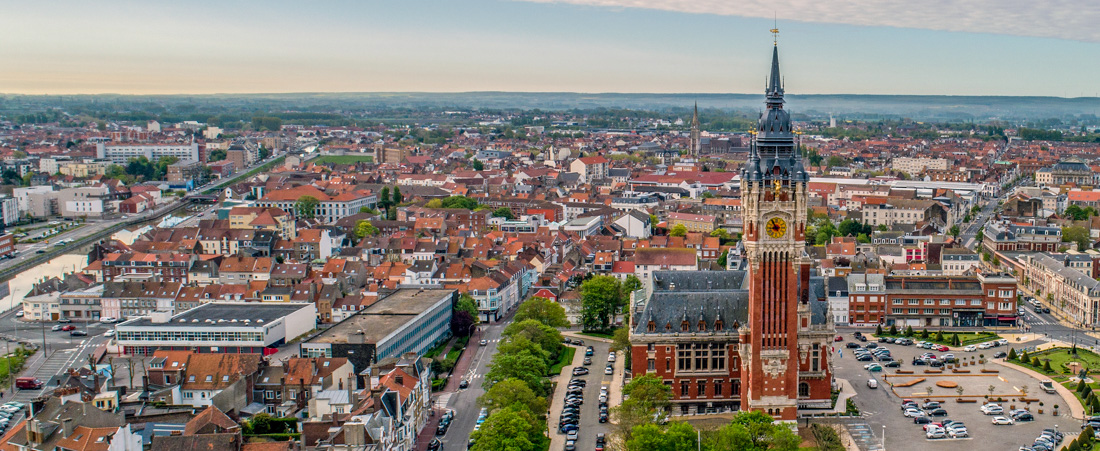
5 Reasons to Visit Calais

The region is known for its mackerel, andouillette sausage, and endive and ham gratin. If you're passing through, this is also a good place to stock up on wine and cheese.
3. Nightlife
You'll find bars and pubs around town as well as a few clubs. Places range from trendy and high end to local dive bars.

5. Shopping

6. Authenticity
Calais has an authentic vibe where you can experience local culture, cuisine, and activities without the large tourist crowds of other popular destinations.
Is Calais worth visiting in the Summer?
Summer is the high season for travel in Calais, so expect more visitors and higher prices. Even though this destination is not very touristy, in the high season it's busier than usual because this is when most visitors come here.
You'll find the weather to be very nice here during summer with average temperatures around 17°C (63°F).
You'll find plenty to do during summer, as you'll be able to lounge on the beach, spend time at the museums, and discover the big city activities. Also, you'll be able to enjoy an evening out.
Is Calais worth visiting in the Autumn?
This is the shoulder season for travel in Calais. This destination is not very touristy, and in the shoulder season it can become fairly quiet.
You'll find the weather to be very nice here during autumn with average temperatures around 12°C (54°F).
During this season it's fun to experience the museums and landmarks and the big city activities.
Is Calais worth visiting in the Winter?
The weather in Calais can be quite cold during winter, and averages around 4°C (40°F). But be prepared for much lower temperatures, too.
The low season for travel in Calais is during the winter. This destination is not very touristy, so in the low season it can become fairly quiet.
This is a great time of year to wander through the museums, dine out at amazing restaurants, and dance the night away. Also, you can enjoy the city's energy.
Is Calais worth visiting in the Spring?
Spring is the shoulder season for travel in Calais. This destination is not very touristy, and in the shoulder season it can become fairly quiet.
The weather in Calais can be quite cold during spring, and averages around 9°C (47°F). But be prepared for much lower temperatures, too.
You'll find plenty to do during spring, as you'll be able to find the best deals at the shops, browse through museums, and enjoy the evening activities.
Things to Consider Before Visiting Calais
Getting Around The area is not very walkable, and public transit is not great here, so it might be difficult to get around without arranging your own transportation.
The Cost Depending on your budget, schedule, and travel style, Calais might be an expensive destination for you. You can find out the travel costs for Calais here or see if Calais is expensive here .
Calais is most famous for being a gateway for travelers to France. The city is very popular for its museums, food, nightlife, beaches, and shopping. It is often described as authentic, undiscovered, and coastal.
The most popular sight in Calais is The Town Hall . You can see prices and costs for this and other sights in Calais on our travel costs page .
Or, see tickets, activities, and tours for The Town Hall and other attractions here .
How touristy is Calais? Is it a popular city to visit?
Calais is an off-the-beaten-path city that many travelers overlook. Here are some of the most popular activities and tours. (Prices in US Dollars)
The ideal length of time for a trip to Calais is one to three days. Since Calais has activities such as nightlife, beaches, and shopping, most people visit for up to three days.
If you have a specific amount of time for your trip, see our advice about how much time to spend here: Should I spend 1, 2, or 3 days in Calais? and Should I spend 3, 4, or 5 days in Calais? .
Subscribe to our Newsletter
Coupons and discounts! Travel tips!

Some of the links on this website are sponsored or affiliate links which help to financially support this site. By clicking the link and making a purchase, we may receive a small commission, but this does not affect the price of your purchase.
- Privacy / Terms of Use
- Activities, Day Trips, Things To Do, and Excursions
Things to Do in Calais, France - Calais Attractions
Things to do in calais.
- 5.0 of 5 bubbles
- 4.0 of 5 bubbles & up
- 3.0 of 5 bubbles & up
- 2.0 of 5 bubbles & up
- Budget-friendly
- Good for a Rainy Day
- Good for Kids
- Good for Big Groups
- Good for Couples
- Hidden Gems
- Adventurous
- Honeymoon spot
- Good for Adrenaline Seekers
- Things to do ranked using Tripadvisor data including reviews, ratings, photos, and popularity.
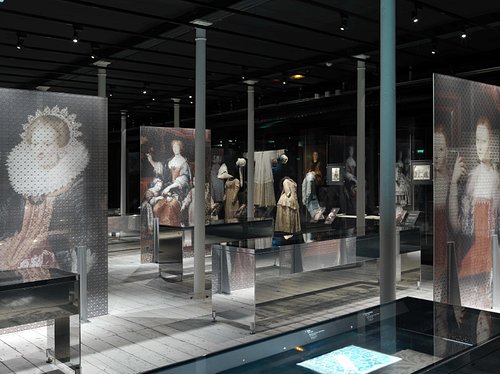
1. La Cite De La Dentelle Et De La Mode De Calais

2. Calais Beach

3. l'Hotel de Ville de Calais
4. The Burghers of Calais

5. Musee Memoire
6. Compagnie du Dragon
7. Calais Lighthouse

8. P&O Ferries Dover - Calais

9. Eglise Notre-Dame
10. Monument Yvonne et Charles De Gaulle
11. Parc St Pierre
12. Tour du Guet
13. Musee des Beaux-Arts de Calais

14. Parc Richelieu
15. Le Beffroi de Calais

16. Fort Risban
17. Jardin Tudor
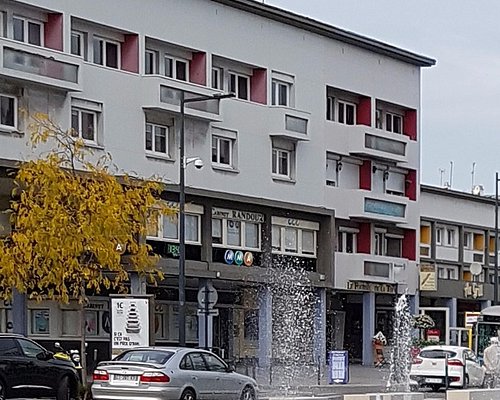
18. Place d'Armes
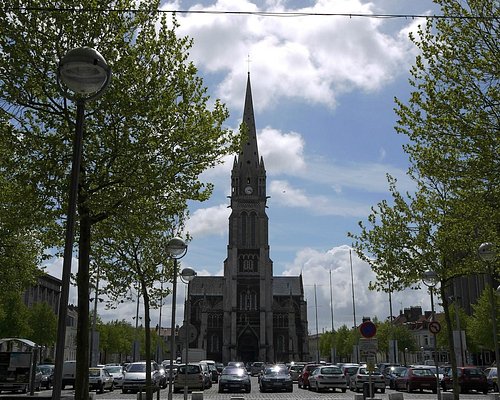
19. Eglise Saint-Pierre
20. Le Théâtre de Calais
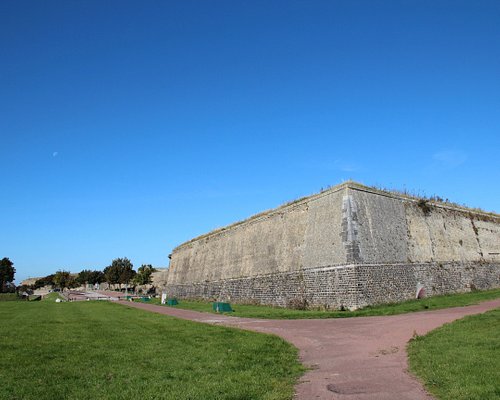
21. Le Fort Nieulay

22. Calais Wine Superstore

23. La Citadelle

24. Le Monument des Sauveteurs

25. P & O Ferries Calais to Dover
26. Port de Calais

27. Stade Julien Denis
28. Royal Kids Parc De Jeux
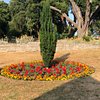
29. Port De Plaisance De Calais
30. la cave de lilie, what travelers are saying.

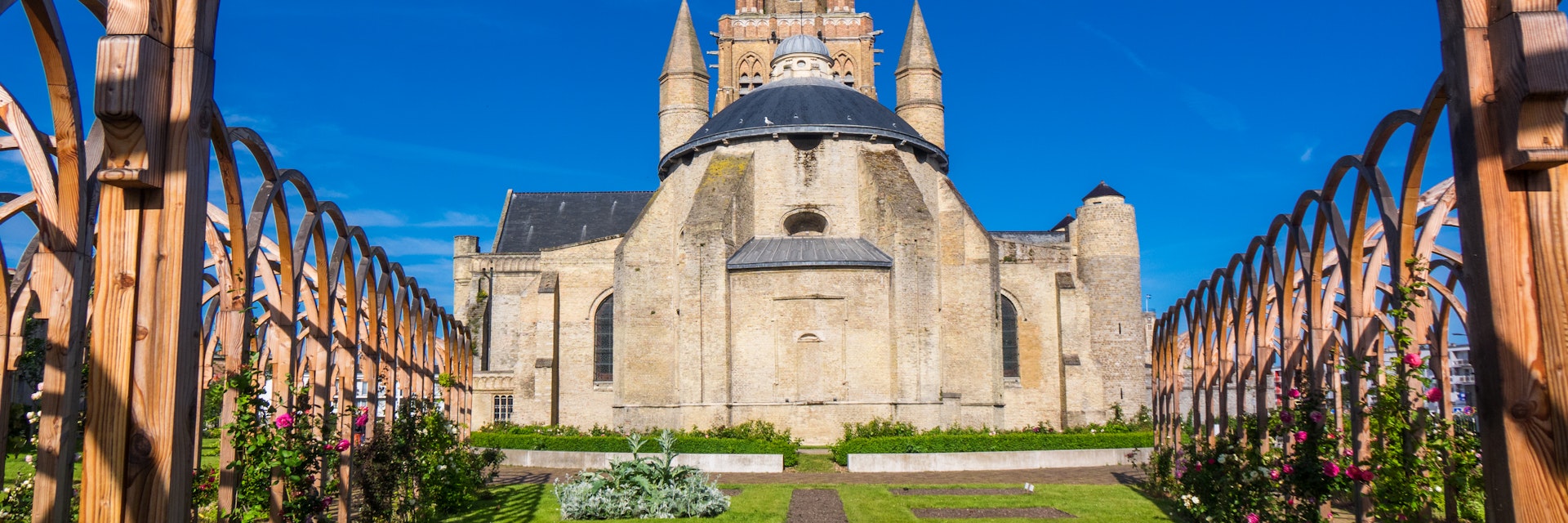
Getty Images/iStockphoto
A mere 34km from the English port of Dover (Douvres in French), Calais makes a convenient launching pad for exploring the majestic Côte d'Opale. Beaches extend around the town centre, whose handful of museums are well worth a look.
Attractions
Must-see attractions.

Cité Internationale de la Dentelle et de la Mode
Innovative exhibits trace the history of lacemaking – the industry that once made Calais a textile powerhouse – from hand knotting (some stunning samples…

Burghers of Calais
In front of Calais' ornate Hôtel de Ville stands the first cast of Rodin's famous sculpture Les Bourgeois de Calais (The Burghers of Calais; 1889), which…

Blériot Plage
This broad, gently sloping sandy beach stretching for 8km is safe for swimming and gets packed in summer.

Hôtel de Ville
Inaugurated in 1925, Calais' Hôtel de Ville (city hall) melds Flemish and Renaissance styles, as does its 78m-high, Unesco-listed beffroi (belfry) topped…

Plage de Calais
Children can splash in the shallow, clear waters of Calais' cabin-lined city beach (patrolled by lifeguards in summer), while its fine sand is ideal for…

Musée Mémoire 1939–1945
Housed in a massive concrete bunker built as a German naval headquarters, this WWII museum displays thousands of period artefacts, including weapons,…
Plan with a local
Experience the real France
Let a local expert craft your dream trip.

Latest stories from Calais
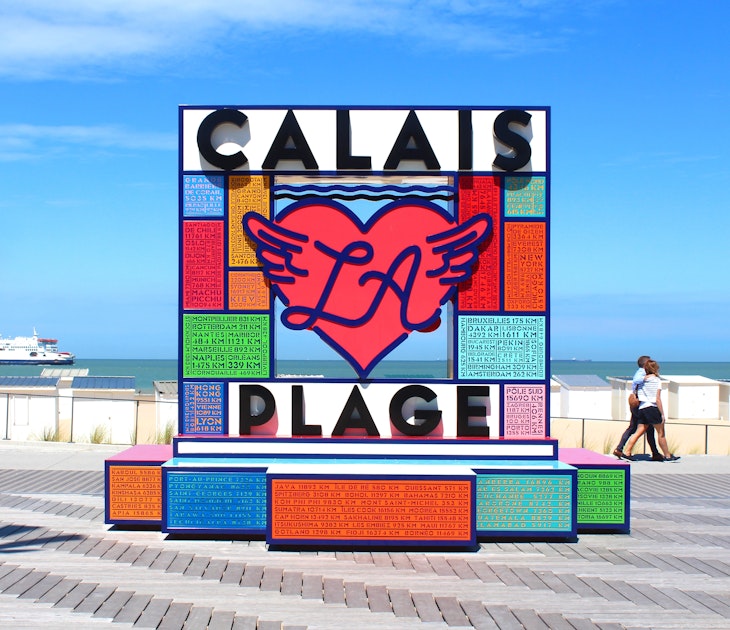
Destination Practicalities
Apr 21, 2024 • 9 min read
From the beach to the museums and the best ways to travel around, get to know Calais in north France with this guide.
in partnership with getyourguide
Book popular activities in Calais
Purchase our award-winning guidebooks.
Get to the heart of Calais with one of our in-depth, award-winning guidebooks, covering maps, itineraries, and expert guidance.
48 Hours in Calais: The Perfect Itinerary
Walter Bibikow / Getty Images
If you're coming from the U.K. by car, then the best route to cross the Channel is via Dover, taking 90 minutes. DFDS runs an excellent service, and the port is also served by P&O Ferries. It is also a great value as prices for travel with DFDS from Dover to Calais or Dunkirk start from 39 pounds each way for a car and nine people. You can upgrade to include premium lounge access for an additional 12 pounds per person each way and with a complimentary glass of bubbly, coffee and snacks as well as a great lunge, it is well worth the small extra.
Some Eurostar London to Brussels trains stop at Calais Frethune, 10 kilometers (6 miles) outside Calais. There is a free shuttle bus (navette) between Calais Frethune and the main Calais Ville Station in central Calais.
Morning Day 1: The Lace Makers of Calais
10 a.m.: Start with a trip to the Lace Museum , officially the Cité Internationale de la dentelle et de la mode de Calais (International Centre of Lace and Fashion), housed in a former lace factory in the area of Calais that dominated lace making in France in the 19 th and 20 th centuries. You get a fascinating walk through the history of lace, starting in a darkened space with displays about the history of lace and fashion from the Renaissance when no female or male attire was without those glorious hand-made lace skirts and ruffs.
On the second floor the story moves into the Industrial Revolution which began in England and changed the world. In France in 1816, an English mechanic Robert Webster with two others brought an English-manufactured machine into Calais and installed it in Saint-Pierre-les-Calais, at that time a small village. A whole colony of English workers arrived to teach their French counterparts how to work the new machinery, making the huge and complex Jacquard designs, which successfully imitated hand-woven lace. It’s rather incongruous to see the vast machine shaking the floor and drowning out conversation as it makes the gossamer-thin, elegant lace.
Then it’s on to videos showing all stages of lace making, from the designer to the draughtsmen who drew the designer’s inspiration onto the papers that are then turned into a wooden pattern of holes that is loaded into the machines. It’s very complicated, time-consuming, and involves skills which are now dying out.
12.30 p.m.: There’s a good café, Les Petites Mains, serving lunch and snacks throughout the day. There’s also a good museum shop where you can buy lace products, books, and gifts.
Afternoon Day 1: Reminders of War Ancient and Modern
2 p.m.: Walk out of the Lace Museum and turn left along the Quai du Commerce that runs beside the canal. You can’t miss the road that leads to the flamboyant Town Hall. Rodin’s famous Monument of the Burghers of Calais stands outside, commemorating the six burghers condemned to death but saved by queen Philippa of Hainault.
If you’ve come into Calais by ferry from the UK and driven out or if you’ve gone past it by train, you can’t miss the high belfry that dominates the landscape, listed as one of France's UNESCO World Heritage Sites in 2005. The flamboyant Flemish neo-classical style makes the building look much older than it is; it was begun in 1911 and finished in 1925. Check with the tourist office on opening times (it’s closed for lunch from noon to 2 p.m. for instance) as it’s worth a visit. The grand staircase takes you up to the wedding room where the future war leader and President of France, Charles de Gaulle, and local girl Yvonne Vendroux married in 1921. Stained glass windows decorate the rooms, showing the story of the liberation of Calais from the English in 1558. You can either take the lift or walk up to the top of the belfry, 75 meters high, with a view taking you across the flat landscape to Flanders and on a clear day to the white cliffs of Dover.
4 p.m.: Walk across the little park to a blockhouse built by the Germany Navy and now housing the Musée Memoire, 1939-45 . Right in the heart of the town, it was well camouflaged and hidden by the trees. It’s a small but effective museum from the point of view of the locals living through the war plus references to the concentration camps.
Evening Day 1: Traditional Bistro Food
7 p.m.: Walk to Au Calice on Boulevard Jacquard. This reliable brasserie with its wooden floors and banquette seating and an outdoor garden hits the spot for traditional eating. With an estaminet type menu, choose from Flemish stew or mussels and chips. This place is cheap and cheerful.
Morning Day 2: A Medieval Tower and a Modern President
Spend today in the central, old part of Calais, originally a fortified town on an island but rebuilt after World War II.
9 a.m.: Start with a brisk walk north, over the Pont Henri Henon and up Avenue R. Pouncaré and you’ll reach the beach with its little cabins and brave swimmers, where the energetic walk with Nordic walking sticks or jog past you while the cross-channel ferries pass in and out of the busy port. Walk back past Fort Risban, its serious defenses bearing witness to the importance of the port for both the French and the English.
10 a.m.: Cross back over the bridge and make a left. Straight ahead you see the column dedicated to Louis XVIII to mark the return of the monarchy to France on April 24, 1814 after the fall of Napoleon. It sounds like an accolade for the town, but in reality, the new king came via Calais because it was the quickest route.
Take the road down to the 19 th -century lighthouse where you’re rewarded for climbing the 271 spiral steps with a fabulous view over the Channel to the white cliffs of Dover.
11 a.m.: Walk back to the Place des Armes which has been renovated from its rather dire condition and is now a lively square which buzzes on Wednesday and Saturday mornings with an open air market. Once the heart of medieval Calais, all that is left is the Tour du Guet. The town has recently added a life-style statue of Charles de Gaulle and his wife, who in 1921 were married in the Notre-Dame church that was built in the 13 th and 14 th centuries when it was under the jurisdiction of the Archbishop of Canterbury. It has now been restored, so look at the Tudor-style garden outside then walk in for its mix of English and Flemish styles, 17 th -century altar and its tower which was used as an observation point in the late 18 th century to calculate the precise distance between the Paris Observatory and the Royal Greenwich Observatory.
The Place des Armes is full of cafes and restaurants, but consdier Du Vignoble au Verre at No. 43. It’s a cozy restaurant with classic French cooking. Dishes like seafood crepe, pepper steak, and scallops in a cider and apple sauce keep the locals and visitors happy.
Afternoon Day 2: A Surprising Discovery
2:30 p.m.: The Fine Arts Museum (Musée des Beaux-Arts ) is a surprising discovery. The works range from 17th century paintings through Impressionism and Picasso to today. There’s an exhibition on Rodin juxtaposed with works by British artist Anthony Caro and everywhere in the museum, the centuries and styles are mixed and contrasted. There are delightful themes like "A Mad Tea Party" from "Alice in Wonderland" where a tea set, hot chocolate pot, and plates with motifs from China, Japan, and popular iconography give a strange disjointed feel, just as Alice felt. It’s all beautifully laid out, giving you a snapshot of art through the centuries.
Evening Day 2: Shopping and Dining
5 p.m.: Calais has some good shops, mostly open until 7 or 7:30 p.m. As you’re next to the Place des Armes, shop for cheese and wine at La Maison du Fromage et des Vins and La Bar a Vins. Then have a quick drink in any of the bars that line the Rue Royale where you'll find my recommended restaurant.
7 p.m.: Dine at Histoire Ancienne , a bistro-style restaurant owned and run by chef Patrick Comte with his wife managing front-of-house. Expect classic dishes from snails and pan-fried scallops with mushrooms and smoked duck, to sea bass, a proper pepper steak, and rack of lamb.
Morning Day 3: Serious Shopping or the Start of a New Trip
If you have come over to visit Calais from the U.K., then a trip to one of the hypermarkets outside the center must be your last port of call before going back. Read the detailed guide to shopping in Calais here.
If you are using Calais as a base for a longer trip, read about the towns, attractions, and glorious beaches along the coast from Calais down to Dieppe , taking in the Somme, making a great road trip of North France.
A Little History of Calais
For the Brits Calais has a special resonance. It was captured by Edward III in 1346 and under English control until 1558 when the Duc de Guise reclaimed the city as French. Mary Tudor mourned the loss: “When I am dead and opened, you shall find Calais engraved on my heart.”
In the 17 th century, King Louis XIV employed the great military architect Vauban to reconstruct the Citadelle and build a series of forts, of which the impressive Fort Nieulay is the best example. In 1805 Napoleon turned up, seeing the town as necessary for his proposed invasion of Britain which never took place.
Much of Calais was destroyed by the British in World War II to stop the Germans using it as the obvious port for an invasion of England. Happily much of the Old Town was rebuilt after the war and it is hear you will find the historic buildings on what was originally a fortified town built on an island.
North Coast of France: The Ultimate Road Trip From Dieppe to Calais
What to Do in Lille in Northern France
The Nord-Pas-de-Calais Region: North France
Eurotunnel - Driving "Le Shuttle" Through the Channel Tunnel
The Finest Museums Outside Paris Are Wonderful Surprises
48 Hours in Marseille: The Ultimate Itinerary
Top 20 Most Popular French Cities for International Visitors
The Top 10 Most Underrated Destinations in France
Top Gardens of France
48 Hours in Ottawa, Canada: The Perfect Itinerary
How to Travel From London to Paris by Train, Bus, Plane, and Car
Top 15 Monuments and Historic Sites in Paris
One Week in France: The Ultimate Itinerary
48 Hours in Mexico City: The Ultimate Itinerary
Albi: Planning Your Trip
48 Hours in Athens: The Perfect Itinerary
- 1 Understand
- 2.1 By ferry (car and foot)
- 2.2.1 Eurotunnel Le Shuttle
- 2.2.2 Roads
- 2.3.1 Eurostar
- 2.4 By plane
- 3 Get around
- 10.1 Consulates
Calais ( Dutch : Kales ) is a city of 73,000 people (2019) in the Hauts-de-France region of France . It is the closest point on the European mainland to England ; Dover lies across the English Channel ( La Manche ) just 32 km (20 miles) away. The town has a major cross-Channel ferry port, and the French entrance to the Channel Tunnel is nearby. Calais is popular with British day-trippers arriving by ferry or on Channel Tunnel shuttle trains one reason being because France has lower taxes on alcohol and tobacco. While most tourists view the town as simply a port, there is much more to Calais.
Understand [ edit ]

Large warehouse supermarkets have sprung up on the outskirts of Calais just to serve the British "booze cruisers" who return to the UK with their car suspensions groaning under the weight of cheap alcohol and cigarettes.
Get in [ edit ]
By ferry (car and foot) [ edit ].
Calais is connected to Dover in England by ferry services operated by P&O Ferries and DFDS Seaways . Ferry crossings between Calais and Dover take typically around 1 hr 30 min and there are up to 46 sailings daily. However, as of March, 2024, only P&O allows foot passengers, and that only twice a day. The check-in time is 30 minutes before departure for vehicles and 90 minutes before departure for foot passengers.

The strait of Dover is one of the most frequented shipping lanes in the world. Calais ferry port allows easy access to the town and to shops outside the town, many of which are designed to sell alcohol to visitors from the UK where higher taxation means alcohol of all kinds is normally priced higher.
Free car parking facilities are available in front of the Calais ferry terminal and the maximum stay is three days.
Another popular ferry route is Dover to Dunkirk (near Calais) which is operated by DFDS Seaways and takes around 2 hours.
Passengers travelling by ferry from Dover to Calais/Dunkirk go through French passport/identity card checks in the UK before embarkation, rather than on arrival in France. Passengers travelling in the other direction from Calais/Dunkirk to Dover by ferry go through French exit checks and UK passport/identity card checks in Calais/Dunkirk before embarkation, and UK customs checks on arrival in the UK.
Fares for the Dover-Calais ferry start from £25 (day return) and £39 (single) for a car with up to 9 passengers.
By car [ edit ]

Eurotunnel Le Shuttle [ edit ]
Running from Folkestone to the western edge of Calais (Coquelles), this car shuttle service operated by Eurotunnel takes about 35 min (although only about 20 min in the tunnel) and offers the fastest way to travel between France and the UK. This train service is for passengers with cars only, who remain with their car for the duration of the short trip, as there are no restaurants (except a fast food restaurant) but there are toilets.
Passengers travelling from Folkestone to Calais go through French passport/identity card checks in the UK before boarding the train, rather than on arrival in France. Those travelling in the other direction from Calais to the UK by Eurotunnel go through UK passport/identity card and customs checks in Coquelles before boarding the train, rather than on arrival in the UK.
Roads [ edit ]
The port in Calais is directly linked to the French motorway system. The A26/E15, Autoroute des Anglais , which provides access to the heart of France including Paris and beyond and the A16/E40, a gateway to Benelux and the northern European motorway systems. The A16/E402 directs you to western France.
By train [ edit ]
Eurostar [ edit ].
Eurostar operates high-speed trains between Calais Fréthun station and the following destinations in the United Kingdom and Belgium :
- London St Pancras International station (1 hr 2 min; 3 daily from London; 2-3 daily to London)
- Ebbsfleet International station (44 min; 2 daily from Ebbsfleet; 1-2 daily to Ebbsfleet)
- Ashford International station (35 min; 1 daily from Ashford)
- Brussels Zuid-Midi station (1 hr 2 min; 2-3 daily from Brussels; 3 daily to Brussels)
Note that Calais Fréthun station is some distance from Calais city centre, but there are a number of trains operating between Calais Fréthun and Calais Ville (in the city centre), as well as shuttle buses and taxis.
The Eurostar timetable is available from their website [dead link] .
Passengers travelling by Eurostar from the UK to Calais go through French passport/identity card checks in the UK before boarding the train, rather than on arrival in France. Passengers travelling in the other direction from Calais to the UK by Eurostar go through French exit checks, followed by UK passport/identity card checks in Calais Fréthun station before boarding the train, and UK customs checks on arrival in the UK.
Those travelling by Eurostar between Brussels and Calais are within the Schengen Area.
Although the Brussels Midi-Calais Fréthun route can't be purchased through the Eurostar website, it is available on the Belgian Railways website .
Eurostar fares [dead link] start from £66 return (under 26) and £69 return (adults) from the UK to Calais.
SNCF [ edit ]
Running from Lille , Boulogne , Dunkirk and Paris , Calais is well supported by the French national rail network. Calais Ville is the station serving the city centre, whilst Calais Fréthun is on the outskirts of Calais. There are trains that operate between Calais Ville and Calais Fréthun stations.
By plane [ edit ]
Get around [ edit ].

Most people travel by car around the town, but there is a comprehensive network of buses running from the town centre to the suburbs and Cité Europe. The port is served by a special shuttle bus although via a footbridge the centre, and the harbour terminal are only 15 min apart.
Bus 5 is useful for reaching the large Auchan and Carrefour hypermarkets and the Cite Europe shopping mall and the 6 goes to Calais Frethun Eurostar station. Services run every 30 min during the day and costs about €1 (board through the front door and pay the driver) and all buses terminate outside the Gare D'Ville.
See [ edit ]

- 50.952358 1.853448 1 Les Bourgeois de Calais , Place du Soldat Inconnu ( outside the town hall ). Rodin's sculpture
- 50.952101 1.850787 2 Parc Saint-Pierre .
- 50.952601 1.854382 3 Hôtel de Ville ( Town Hall ), Place du Soldat Inconnu . Get in, and go upstairs through the majestic staircase to the first floor and the wedding room, the ballroom and the "parliament" room. Self-visit (signs to read) or guided tour by Opale Tour. It is possible to access the belfry via a lift.
- 50.950776 1.860076 5 Cité Internationale de la dentelles et de la mode , ☏ +33 3 21 00 42 30 . An old factory refurbished into a "living" museum about the story of lace, and especially the lace made in Calais on levers. You can see two machines working. Restaurant, bar and lace shop. Worthwhile. Allow at least 2 hours.
- 50.95677 1.85183 6 Modern Art museum , 25 rue Richelieu . Permanent and temporary exhibitions. Sculpture, paintings.
- 50.95212 1.85103 7 War museum , Parc Saint Pierre ( in front the Town Hall, located in a real bunker ), ☏ +33 3 21 34 21 57 , [email protected] .
- 50.94716 1.85341 8 Theatre , Place Albert 1er . Guided tours by Opale Tour.
- 50.94582 1.83981 9 Le Channel, Scène Nationale . Shows, library, restaurant, in a former slaughterhouse. Really worth a visit for the architecture .
- Courgain Maritime and fish market . A former fishermen's quarter outside the walls of the city. Rebuilt after the war, but a nice place to buy fresh fish and have a drink.
- The beach and the jetty . To have a look on the ferries plying the route between France and Britain.
- The White Cliffs of Dover . Visible in the distance.
- 50.95647 1.84308 11 Citadelle and Fort Nieulay . Renaissance fort with guided tours.
Do [ edit ]
- 50.95512 1.84753 1 Swimming pool , Piscine Ranson or ICEO complex .
- 50.95643 1.89668 2 Skating rink ( Iceo ). ( updated Jun 2017 )
- 50.98555 1.96249 3 Char à voile . base des Hemmes de Marck.
- 50.95436 1.79939 4 Sailing school , Base de voile, Blériot-Plage ( coast road to Sangatte ).
- 50.95179 1.85431 5 Alhambra , 2 rue Jean Jaurès ( beside Town Hall ), ☏ +33 3 21 17 73 33 , [email protected] . VOSTF films. ( updated Dec 2022 )
- 50.93618 1.80948 6 Pathé Cité Europe ( Cité Europe ). ( updated Dec 2022 )
- 50.94627 1.87992 7 Bowling Alley ( Bowling de Calais ), 1 Avenue Antoine de Sant-Exupéry , ☏ +33 3 21 34 34 22 . ( updated Jun 2017 )
- Visit the Coast up to "Cap Blanc Nez" (White Nose Cap), Unesco Classified site. If you have no car, you can take the bus (double-decker) at the theatre or the station for €1 there along the see road. Really cool.
Buy [ edit ]
- Alcohol . Since France has slightly lower taxes on alcohol than the UK various establishments have set up to cater for day trippers, although often it is a little cheaper to go to a local hypermarket (and you can pick up other stuff). The main hypermarkets are Auchan and Carrefour [dead link] , the latter within the Cité Europe shopping centre and can both be reached on bus 5. In the town centre, there is a smaller Carrefour located at the back of the Quatre Boulevards shopping centre (near the Opéra).
- 50.935174 1.80832 1 Cité Europe , 1001 Boulevard du Kent ( Located next to the Channel Tunnel terminal. Junction 41 or 42 on the A16 ). Large shopping centre containing 147 shops, 20 restaurants, and a cinema. Note that the shops are closed on Sundays and none of them sell tobacco.
- 50.94475 1.859334 2 Place Crevecœur Market . on Thursdays and Saturdays .
- 50.959427 1.849736 3 Place d'Armes Market . on Saturdays .
- 50.950776 1.860076 4 Lace Museum shop .
- 50.9501 1.84133 5 Boutique Noyon , Rue des Salines , ☏ +33 3 21 46 79 00 , fax : +33 3 21 97 74 88 . M-F 08:00-12:00 & 14:00-17:00 . factory-turned-designer shop.
Eat [ edit ]
- 50.95976 1.84847 1 La Guinguette , 9 Rue de la Mer , ☏ +33 3 91 91 57 63 . Home food, family atmosphere, good quantity/quality value.
- 50.95991 1.84902 2 L'Ambrosia , 14 Rue de la Mer , ☏ +33 321 36 09 89 . Wok specialist but not Asiatic with good value and price.
- 50.956051 1.849532 3 L'Hovercraft , 11 Place du Maréchal Foch , ☏ +33 321 34 59 73 . Bar and brasserie. The largest choice of "welsh" dishes (speciality from Calais/Boulogne). Open late. Big terrace.
- 50.966502 1.84317 4 Friterie des Nations , Digue Gaston Berthe . Some chips in front of the sea
- 50.95258 1.85169 5 Friterie Wilson , Avenue Wilson, Parc Saint-Pierre ( near Town Hall and railways Station ). may be the best chips in town
- 50.9592 1.849012 6 Café de la Tour , 5 Place d'Armes , ☏ +33 3 21 34 50 14 . Great omelettes
Drink [ edit ]
- 50.96092 1.841 1 Le bar du Yacht Club , Bassin Ouest . Nice 1980s music.
- 50.95967 1.84791 2 La Suite , Rue Jean Quéhen . Night bar: to carry on after Baba ou Mauvaise herbe
- 50.95853 1.849206 3 Discothèque 555 ( Le 555 ), 63 rue Royale . Old but famous disco.
- 50.959565 1.848047 4 La Nauvia , 16 Rue Jean Quéhen . Disco.
- 50.958373 1.849216 5 Le Casino de Calais , 59 rue Royale . Slot machines, blackjack.
- 50.94572 1.83979 6 Le Channel Scène Nationale , 173 Boulevard Gambetta , ☏ +33 321 467710 . Former slaughterhouse, refurbished in a huge cultural centre with various rooms, café, resto, bookshop. A great place.
Sleep [ edit ]
- 50.963603 1.841883 1 Auberge de Jeunesse de Calais ( Centre Européen De Séjour ), Avenue du Maréchal DeLattre de Tassigny , ☏ +33 321 34 70 20 , [email protected] . Youth hostel, but no age limit with private room. really close to the beach. Nice place
- 50.948099 1.851405 2 Le Mouton Blanc , 44 rue du Vauxhall ( near the theatre and 4B shopping centre ), ☏ +33 321 34 71 52 . Family owned. Guide du routard recommended
- 50.960535 1.848888 3 Holiday Inn , 6 Boulevard des Alliés , ☏ +33 3 21 34 69 69 . The car parking is an experience, for good drivers.
Cope [ edit ]
Consulates [ edit ], connect [ edit ], go next [ edit ].
To hitch-hike to Belgium or the Netherlands , if you leave the terminal, you must walk 500 m through a large car park, after which you will see roundabout and an on-ramp to the motorway. That is the place to hitch a ride: there is enough space even for a big lorry.
For a more 'traditional' experience of France, Saint-Omer is 43 km (26 miles) down the road from Calais. The Saturday morning market on the main square, the Place Foch, can be enjoyable. There are also good affordable restaurants and friendly bars, as well as interesting architecture.
Other options:
- Ardres — for the old city and its lakes
- Guines — with its marshes, forest and old tower
- Wissant — with the Le site des 2 Caps on the seaside
- Oye Plage — with the natural reserve of Le Platier d'Oye
- Has custom banner
- Has map markers
- Has caution box
- Has caution box with no date
- Articles with dead external links
- Airport listing
- Has mapframe
- See listing with no coordinates
- Do listing with no coordinates
- Has routebox
- Hauts-de-France
- All destination articles
- Usable cities
- Usable articles
- City articles
- Has Geo parameter
- Pages with maps
Navigation menu
- Add Your Travel Deal
- FREE Travel Newsletter

Travel Guide: What to see in Calais, France
Often overlooked in the rush to catch a cross channel ferry, calais is well worth a stopover - especially when the dragon is in town..
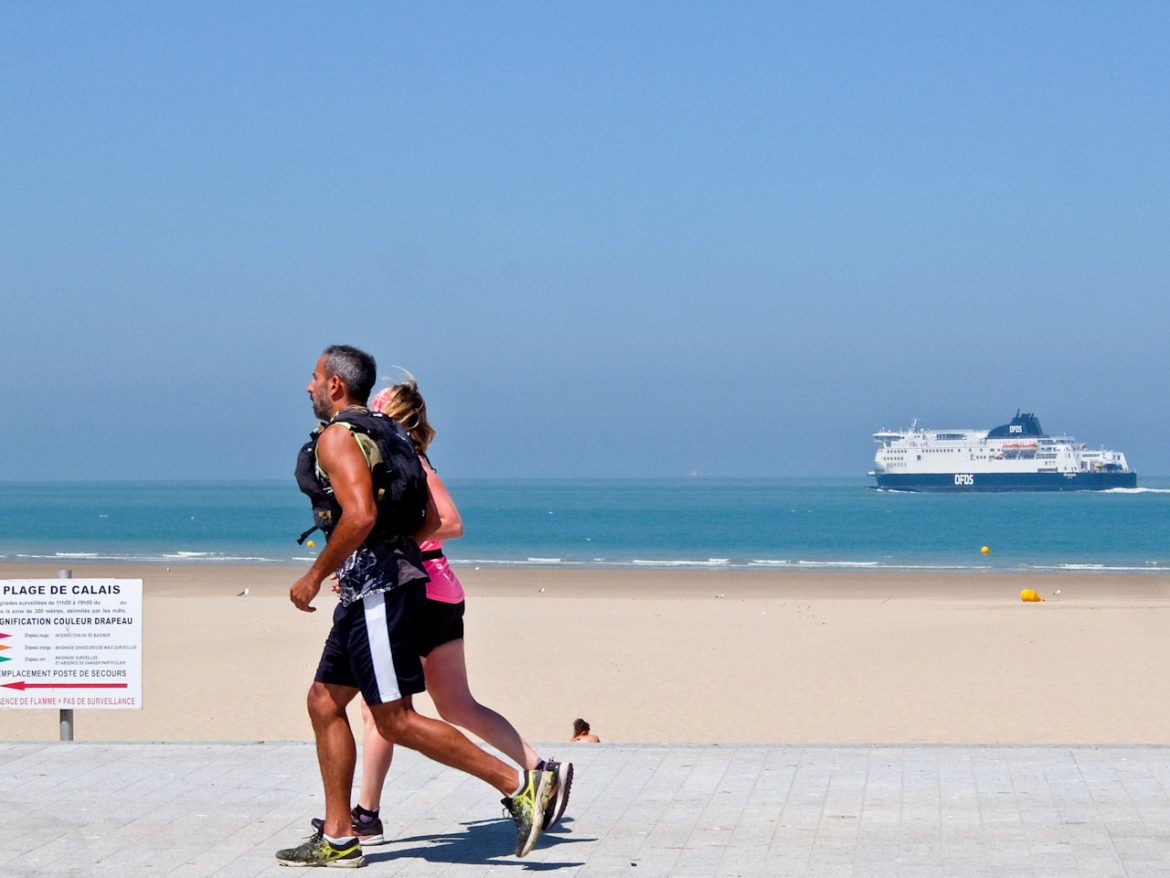
Unlike Dover, its counterpart on the other side of the channel, Calais feels positively booming. It’s got an added new attraction in the form of a giant dragon which strolls the seafront and its buses and boats are now free for everyone.
It makes a great weekend destination, perfect for stocking up on wine and cheese, and dining in its excellent restaurants. It’s also easy to forget that it enjoys a long expanse of wide sandy beach, rising up to the cliffs of Cap Blanc Nez, with perfectly safe bathing for children and adults alike.
Calais Dragon
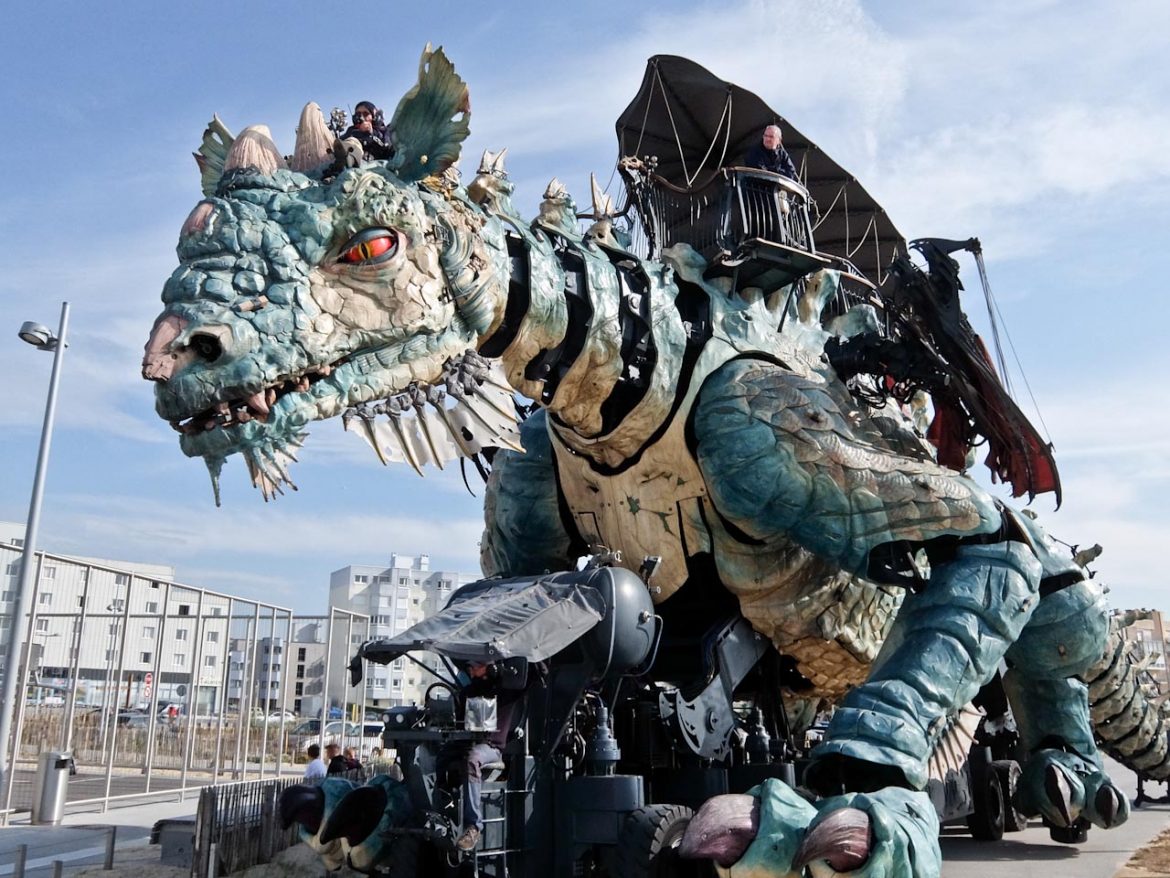
Calais Dragon Head
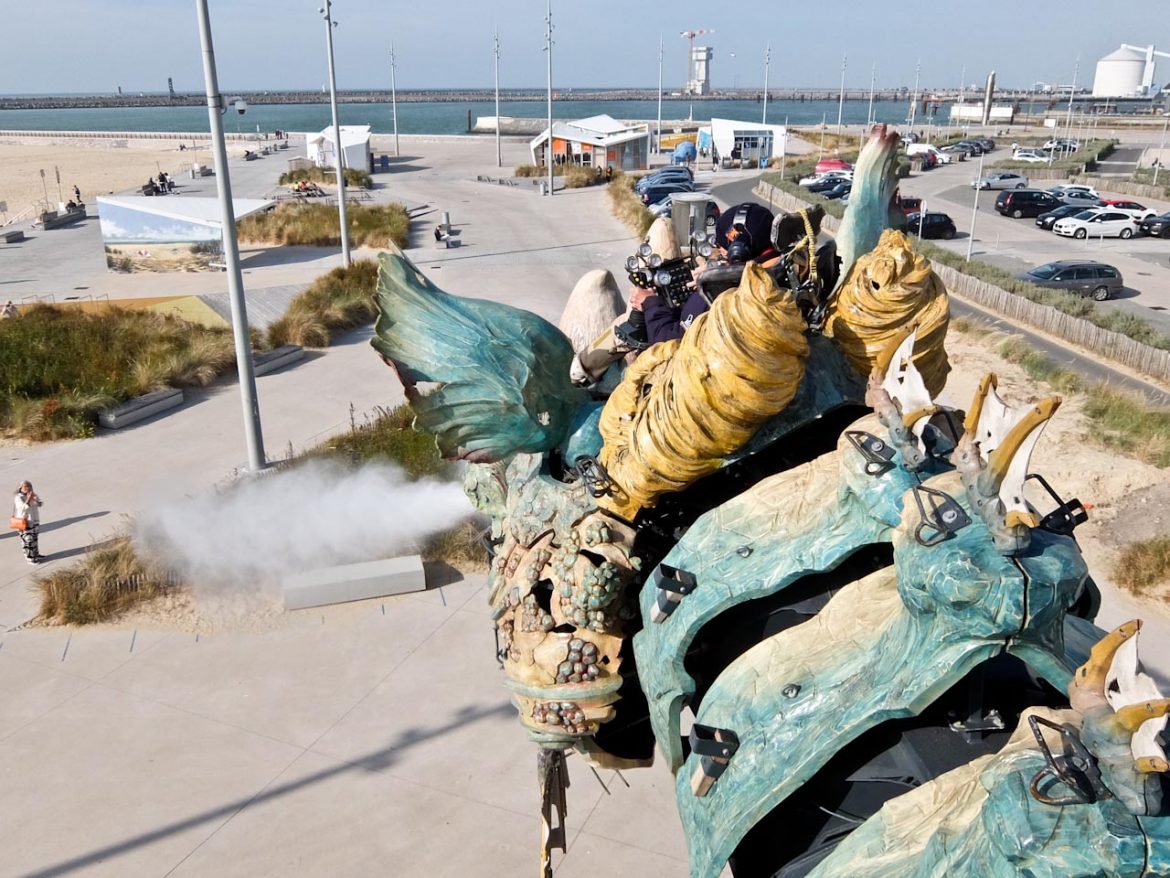
Calais Dragon Pilot
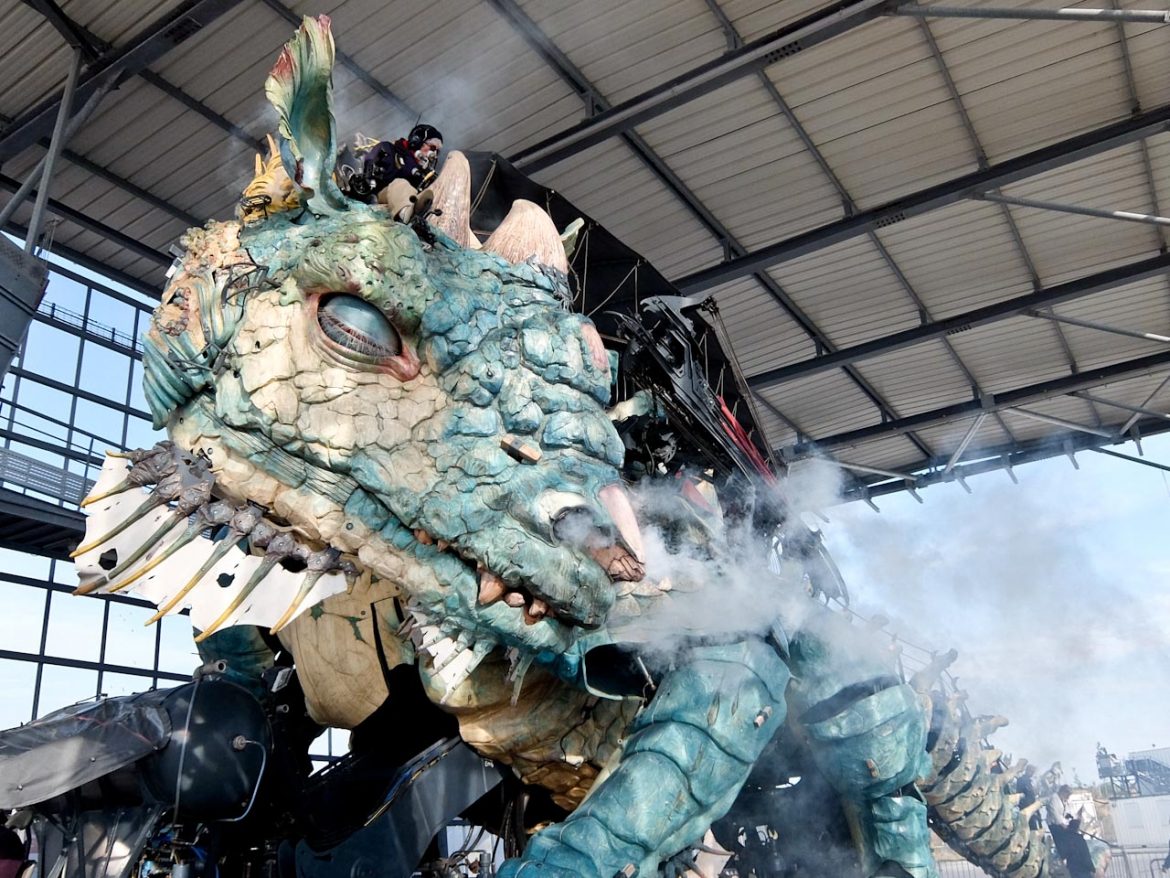
Calais dragon
Dragons are certainly known in the Nord region of France and the traditional processions and parades of effigies of giants and dragons are now included on the UNESCO Intangible Cultural Heritage List. A more recent attraction, the Calais Dragon, is a colossal construction made from steel and carved wood, designed by François Delaroziere. It takes 48 passengers on a 45-minute journey as it trundles along the prom, towering above parked cars and pedestrians, mist escaping from its body through thirty vents.
You climb on board via a staircase integrated into its tail and take your seat on the top deck. From this position, there are glorious views of the sea and beach, as it progresses at a reptilian 4 km/h. But best of all is the sight of unsuspecting pedestrians jumping out of the way as it moves its eyelids, ears, mouth and tongue, spitting fire and water. Of course, it’s all done by teamwork and a crew of six is required to pilot the dragon. More technicians get involved as the dragon docks in an immense shelter at the end of the promenade
Calais Town Hall
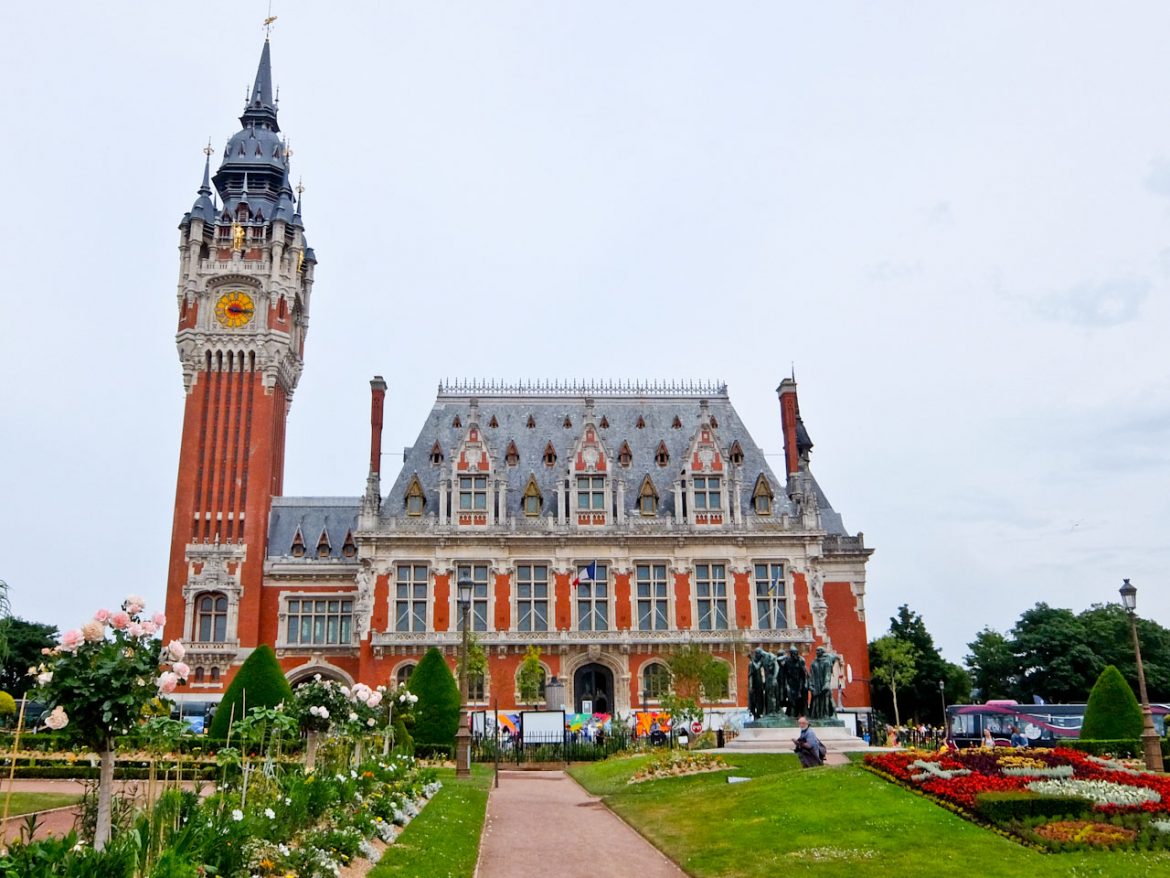
Calais Town Hall Stained Glass
A dragon weathervane sits on the top of the belfry of Calais Town Hall, dominating the town. The building commemorates the merging of the two towns of Calais and Saint Pierre in 1885 but work didn’t start until 1911. Louis Debrouwer was one of the first architects to use reinforced concrete and as a result, it survived WW1 more or less intact. Still, remedial work meant it wasn’t inaugurated until 1925, and there was more damage in 1940.
Inside, there’s a large staircase leading to the first floor, decorated with magnificent stained glass windows. They portray the story of the liberation of Calais from the English by the Duke of Guise in 1558. The ornate brick clock tower and belfry is a Calais landmark and stands 75m high. It contains one of the most beautiful chimes in the north of France and is a UNESCO World Heritage Site. Climb to the top for panoramas over the town and a close-up of the dragon weathervane.
Calais Lace & Fashion Museum
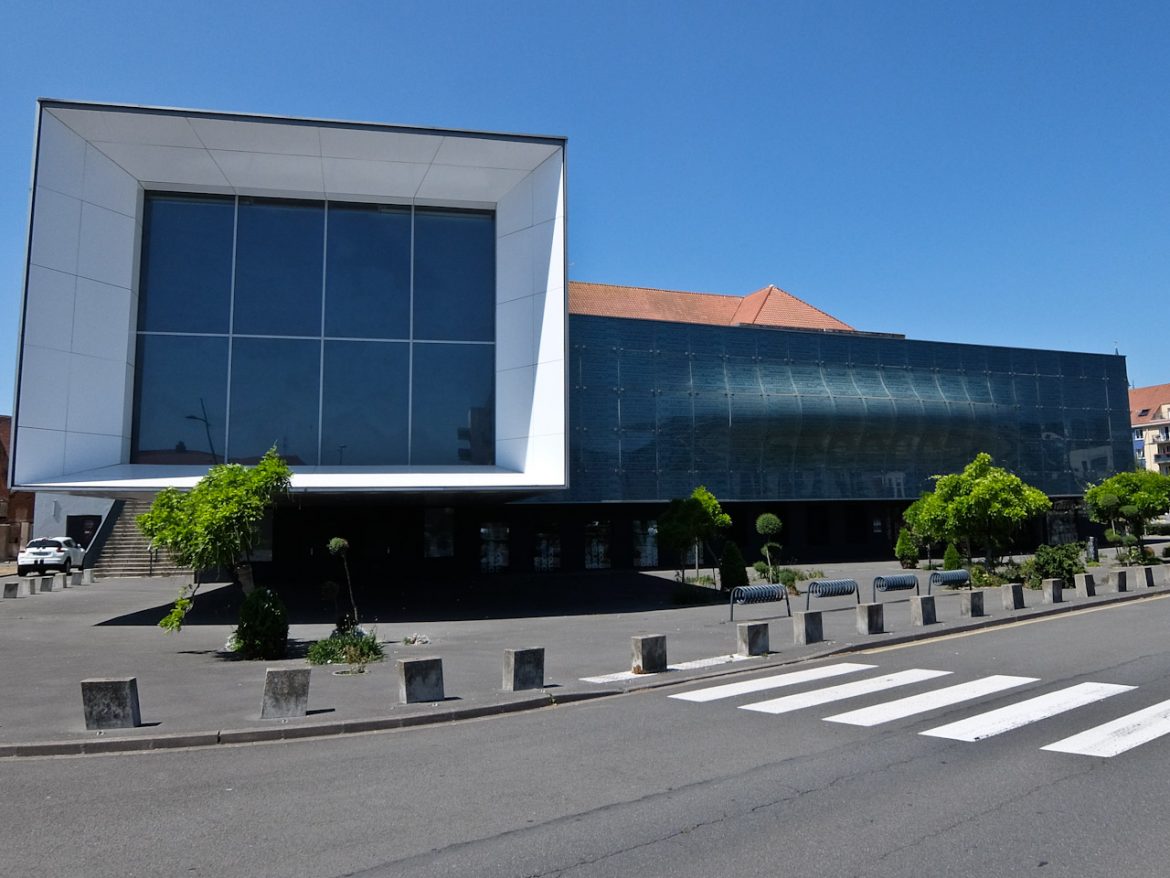
Calais Lace Museum
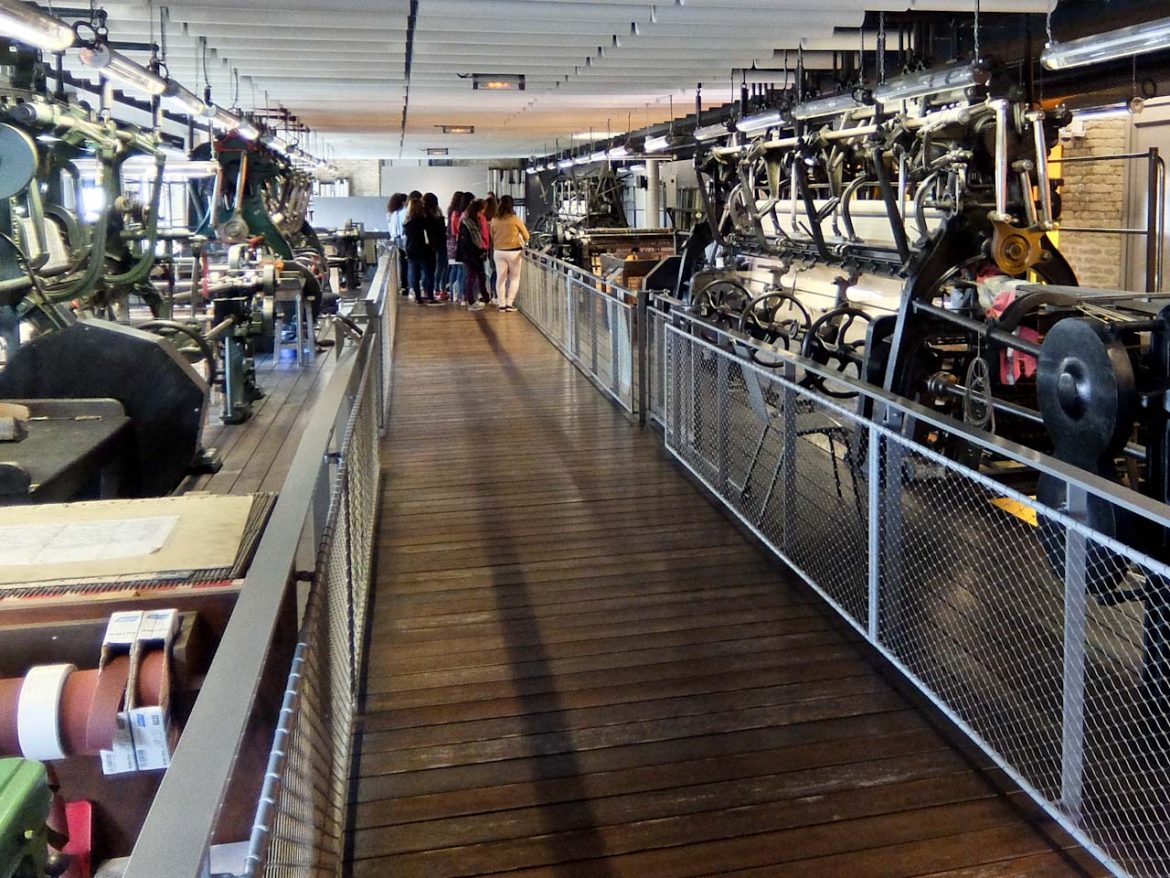
Calais Lace Museum Looms
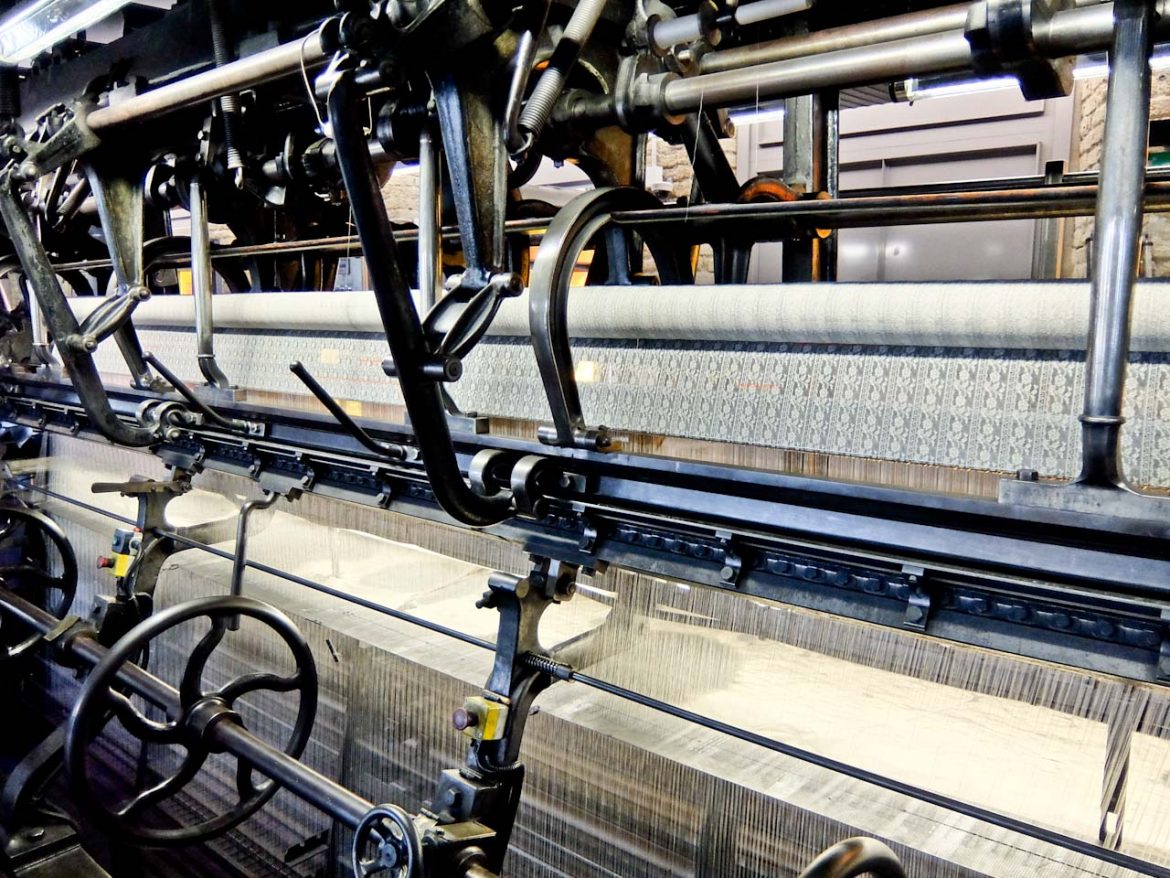
Calais Lace Museum Loom
Calais has been making lace since 1816 when machinery from England was smuggled in illegally. These industrial looms were subsequently modified to use the Jacquard system, which allowed mechanically produced lace to rival the handmade variety. By 1910 there were more than 40,000 people employed in the lace trade but these days there are only a handful of companies left. The area is still responsible for around 80% of the world’s lace production and top designers still come back to Calais for their materials.
The museum was set up in 2009 in a 19 th century glass factory and has a modernistic glass and steel extension. The first section is devoted to the history of hand lace from the 16 th to the 19 th century, displaying some beautiful examples. It then moves to industrial production, beginning in the 19 th century, and five working Leavers looms have been installed, each with its own trained operator. This is where you see the lace being produced and a guided visit takes you through each stage of the process. Finally, there’s the fashion department containing over 3000 items, made between 1850 and the present.
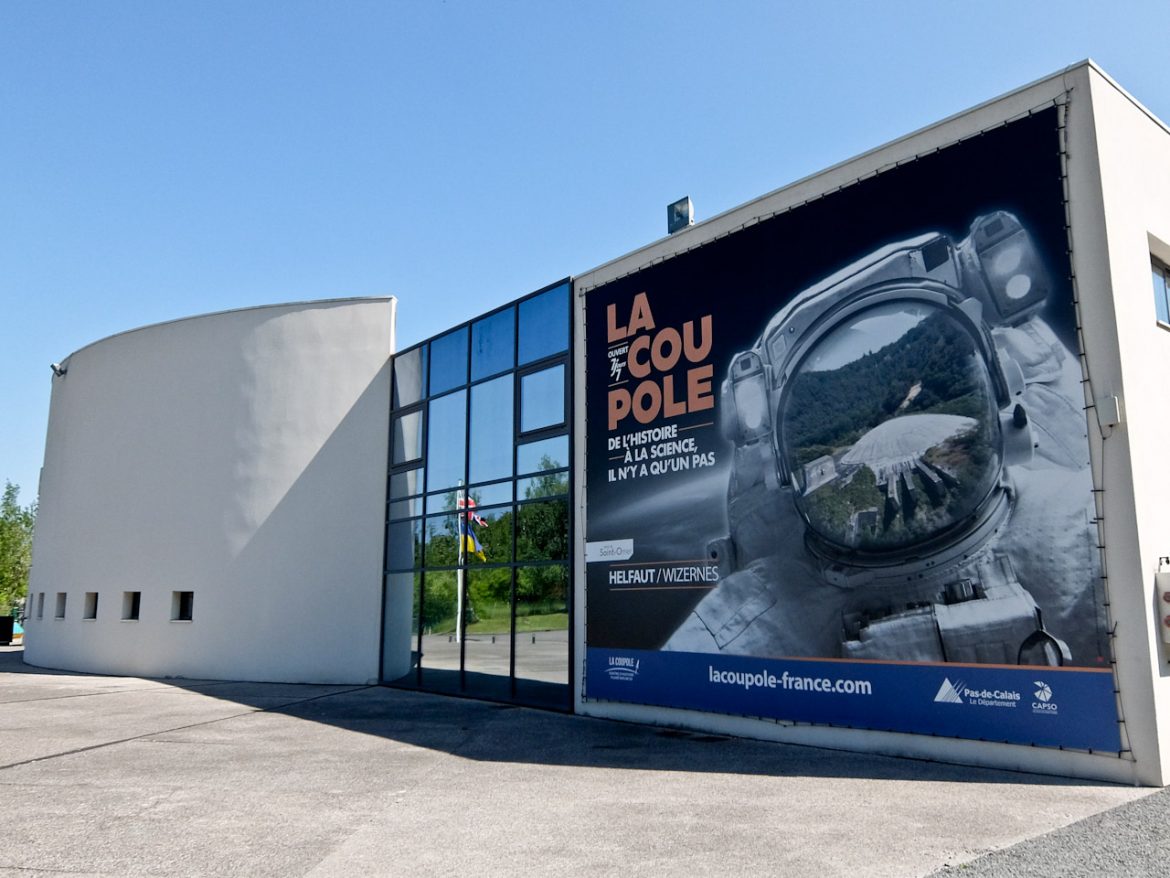
La Coupole Rocket
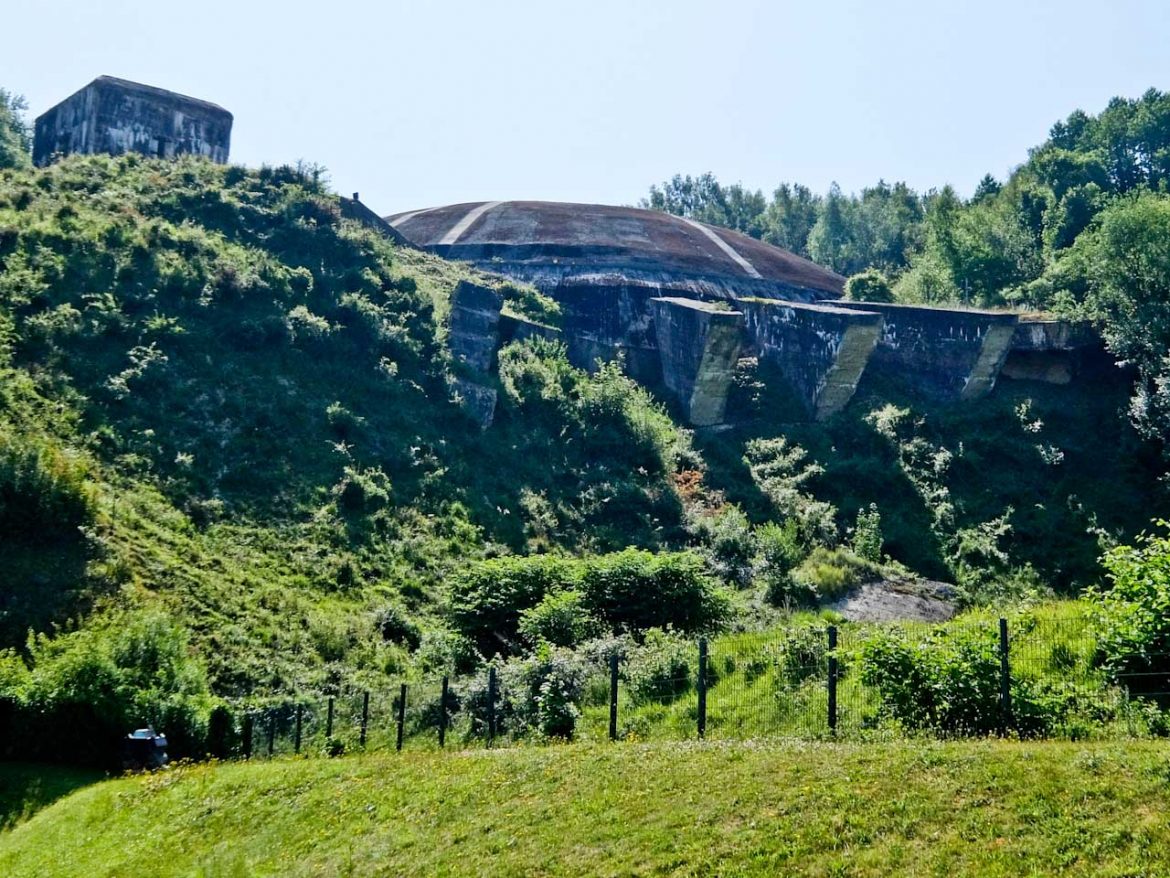
La Coupole Bunker
45 minutes’ drive from Calais is one of the most impressive remnants of the Second World War in Europe. La Coupole is a huge domed bunker, built by slave labour in 1943-1944, as a launching site for V2 rockets aimed at London. It was heavily bombed by the Allies and was abandoned in the summer of 1944, without launching a single rocket.
The V2s which struck London and Antwerp in September 1944 were sent from mobile units in Holland. Since 1997, it’s has been turned into a History and Memory Centre, a World War 2 museum, not only dealing with V1 and V2 weapons but also the history of the Nazi occupation of the North of France.
You enter through a dark tunnel, filled with the sounds of construction and bombing, to access the luminous concrete dome. This was meant to be the launch site for the V2’s and the exhibition traces the history of Wernher von Braun, the German designer of the rockets. After the war, he was taken by the Americans and went on to work for NASA and put men on the moon. He’s still a divisive figure, responsible for weapons of mass destruction and also a pioneer of the space race.
INFO: Pas de Calais Tourism has information about the region.
EAT: Aquaraile serves excellent seafood and has glorious sea views.
STAY: The Metropol Hotel makes a comfortable base in a quiet part of town.
You might also like: 5 Pretty French towns easy to get to from Calais
Restaurant Review: Treehouse@51, St James, London
Ski guide: skiwelt, austria, leave a comment cancel reply.
Save my name, email, and website in this browser for the next time I comment.
This site uses Akismet to reduce spam. Learn how your comment data is processed .
Related Articles
Travel guide: guatemala, central america, cruise review: cruising with holland america line on..., 13 of the best walking trails in the..., travel guide: a weekend in sunny sacramento, california, travel guide: what is there to see and..., travel guide: portovenere on the italian riviera –..., travel guide: a visit to stratford-upon-avon, the land..., top 5 places in the world to swim..., travel guide to nicaragua, central america, which of the cyclades islands in greece should....
- Regions of France
- French Departments
- Atlantic Coast
- Centre-Val de Loire
- Champagne-Ardenne
- Loire Valley
- Midi-Pyrénées
- Nord Pas de Calais
- Poitou-Charentes
- Provence-Alpes-Côte d’Azur (PACA)
- Battlefields & Memorials
- Museums & Art Galleries
- Theme Parks
- Christmas Markets
- Cruises/Canals
- Walking & Cycling
- Towns & Cities
- Travel to & around France
- Accommodation
- Restaurants

Guide to Calais – A Great City
Guide to Calais? A great city? Yes, I love the place and it’s had a hard time in the past persuading people to stay rather than leave the ferry port and get on the nearest motorway for the dash to the south. But anyone who does that is missing out.
So consider staying in Calais on your way to or from your holiday. Or even better, take a short break to Calais. It’s close, easy to get to and get around and has a lot to offer.

Calais has spent the last few years getting its act together. It’s always enjoyed an intriguing history closely intertwined with Britain that started in the 12 th century. Now it has great attractions as well. Add to that, its hotels, a growing number of seriously good restaurants and…a dragon spouting smoke. What more could anyone want?
So here’s a guide to Calais to persuade you to give the town a try.
But first a very brief historic introduction.
Calais – The beginning
Calais’ history and the English connection goes back to Roman times. Its strategic position so close to England made it the natural choice for any and every invasion starting with Julius Caesar. In 54 BC, Caesar mustered 800 to 1,000 sailing boats, five legions and some 2,000 horses in and around Calais for his attack on Britannia.
At that time Calais was a fortified town on an island, giving it vital natural defenses. Known today as Calais Nord, the area at the heart of historic Calais is still almost completely surrounded by canals and the harbour.
Medieval Calais and England’s Claims on France
During the Middle Ages Calais took on its real significance as a major trading port which the English needed for its immensely wealthy wool trade. But it was the tortuous politics of inheritance between closely related families that led to war.
The English Plantagenet King Edward III claimed to be the rightful heir to the Kingdom of France; the French House of Valois claimed the country. The conflicting dynastic ambitions sparked the Hundred Years War which started in 1337 and lasted on and off to 1453.

In 1346 the Battle of Crécy demonstrated the great power of the English longbow archers when the English, led by Edward III and his son Edward the Black Prince, decisively beat the Genoese crossbowmen and heavily armoured French knights. A year later, Edward besieged Calais for 11 months before capturing the town.
English longbows continued to dominate medieval warfare for centuries, and were decisive against the French once more at the Battle of Agincourt in 1415.
The History of Calais told through its attractions
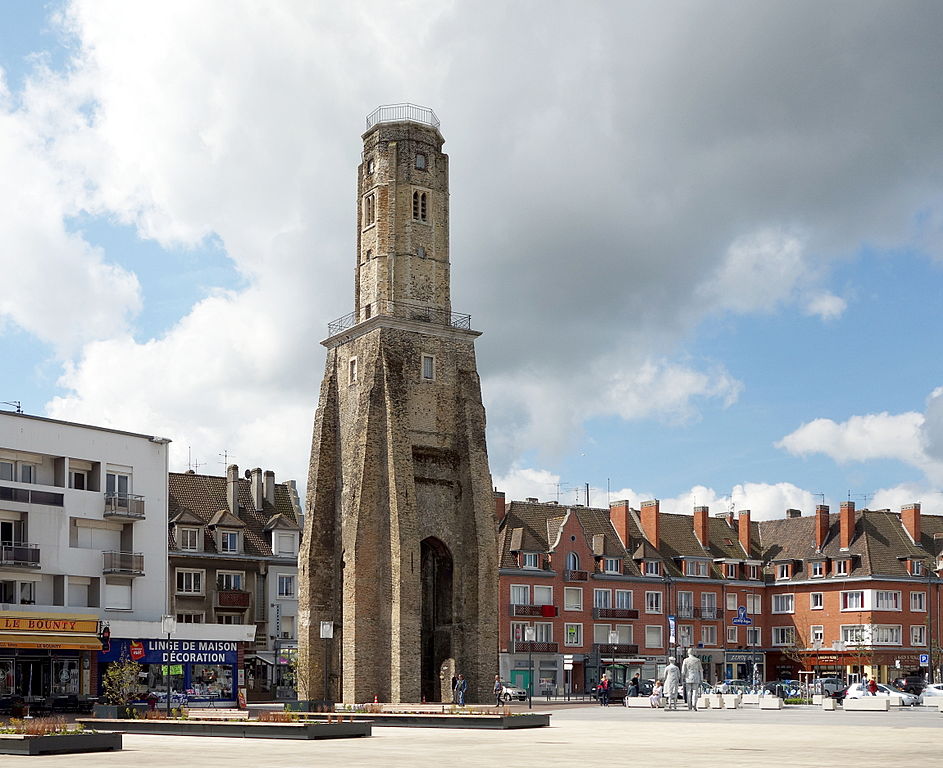
The only existing medieval building in Calais Nord is the Tour de Gouet on place d’Armes. The 13th-century tower, built by the Count of Boulogne in 1214, is 39 ms/128 ft high. It was damaged by an earthquake in 1580 and used as a lighthouse until 1848. In World War I, it served as a military post and has a dovecote for those essential carrier pigeons.
Notre-Dame Church

Notre-Dame Church was the heart of the medieval city. Begun in 1214, it suffered from the English who raped, pillaged and burnt Calais after capturing the city in 1347.
First impressions are confusing; the church looks as if it should be in Canterbury rather than Calais. But it makes sense. The English rebuilt Notre-Dame in the 14 th century, producing the largest English perpendicular-style church in Europe, and subject to the Archbishop of Canterbury. It remained the place of worship for numerous English Kings, Queens, Dukes and sundry royals through the following centuries.
In 1921 the future President of France, Charles de Gaulle and Yvonne Vendroux, who was from Calais, celebrated their religious wedding in Notre-Dame.
It was partially destroyed by Allied bombing during the summer of 1944 and stood, roofless, for twenty years before restoration of the old church started.
Notre-Dame is more than a church

The church has seen some disparate events. The tower was used as an observation point for the Anglo-French Survey conducted from 1784 to 1790. The survey used trigonometry to calculate the precise distance between the Paris Observatory and the Royal Greenwich Observatory and was a landmark achievement.
In 1785, after Jean-Pierre Blanchard managed the first hot air balloon crossing of the English channel, the balloon was hung up in the church.
The church is large, shaped like a Latin cross. Inside the 17th-century high altar and statues are the most notable features, along with several large religious paintings.
Outside there’s a charming ‘Tudor’ garden and a plaque for Charles de Gaulle and Yvonne Vendroux.
A Modern Take on Medieval Calais
Calais hôtel de ville and belfry.

Located in Calais Sud, Calais Town Hall is a glorious over-the-top building, dominating the main square. It was built between 1911 and 1925 in flamboyant 15 th -century Flemish style though it looks much older. It stands in its own space, with Rodin’s famous Six Burghers of Calais statue in the gardens at the front. Commissioned in 1885 by Calais, this is the first of the 12 original casts of the statue that are now located around the world.
The statue commemorates an incident in 1347 when first Edward took over the town and called for six of the main leaders of the 11-month siege. They were told to appear with halters round their necks. “I will do…as I please” the King threatened. According to the chronicler Froissart (c. 1337– c. 1405), Edward’s wife, Queen Philippa of Hainault, successfully pleaded for their lives.
I remember the effect of seeing the extraordinary Rodin sculpture for the first time. It was one of those ‘living history’ moments; my excuse is that I was brought up on romanticized history books. Even if today’s young don’t feel quite the same, it’s a formidable and powerful work of art.
Visit Calais Town Hall
The interior is as flamboyant as the outside. A grand staircase lit by a splendid stained glass window suitably showing the departure of the English in 1558 leads up to the first floor grand reception rooms and the Registry office where Charles de Gaulle married local girl Yvonne Vendroux in 1921 in a civil ceremony.
View from the Belfry
Take the lift up the 75-meter high belfry for panoramic views across the flat landscape to Flanders and on a clear day to the white cliffs of Dover. It’s one of 23 bell towers of northern France which joined the belfries in Belgium as part of the Unesco World Heritage List of Belfries built between the 11 th and 17 th centuries.
Tip: Read Bernard Cornwell’s fictional trilogy The Grail Quest . It has some of the best descriptions of the bloody and ferocious battles of the Middle Ages. Harlequin , the first in the trilogy covers the Battle of Crécy. Cornwell bases the warfare on Trial by Battle , the first volume of the superbly written history of the Hundred Years War by Jonathan Sumption, medieval historian, author and former senior judge.
Calais Town Hall & Belfry Place du Soldat Inconnu Tel: +33 (0)3 21 46 20 53 Website Open Oct 1-Apr 14: Tues to Sat 10am-noon & 2pm-5.30pm; Apr 15-Sept 30: Daily 10am-noon & 1.30pm-5.30pm Admission Town Hall €5; Belfry €3; combined ticket €7
The Importance of Calais to the English
The English ruled Calais for two centuries from 1360. It became known as the ‘brightest jewel in the English crown’, as the port for the exports from England of Cornish tin, lace, lead and the all-important wool. With around one third of the English government’s revenues coming from Calais, its importance was reinforced in 1372 when Calais became a parliamentary borough, sending its burghers to the relatively new House of Commons in London.
Henry VIII visited Calais in 1532 and found a huge city, calculating around 2,400 beds and stabling for 2,000 horses.
But after two centuries English rule was about to come to an end. In January 1558, King Henry II of France sent the Duke de Guise with a formidable army to attack the city. Calais once again became part of the Kingdom of France.
Industrial Calais and the Lace Industry

Lace-making was always a vital industry in Calais but it was the Industrial Revolution that changed the town. A lace-making machine smuggled in from the UK was set up in the former town of St-Pierre and transformed the artisan craft into a major industry.
Cite internationale de la dentelle et de la mode de Calais (International Center of Lace and Fashion)

The International Centre of Lace and Fashion is housed in a former lace factory in St-Pierre in Calais Sud. It takes you through the fascinating story of lace. And please note, it’s not just for those interested in fashion; there’s a hefty machine that produces the gossamer-like material, and plenty of films and videos revealing the complex process. Check here for my Guide to the International Center of Lace and Fashion .
Guide to Calais – A Port for War
It’s inevitable that Calais would continue to play a part in any conflict between the two countries. In 1805 part of Napoleon’s army was quartered here in preparation for his aborted invasion of Britain. In 1818 the British army that had defeated the Emperor and occupied France departed from Calais for their journey home.
In World War I Calais was used by the British Expeditionary Force to land troops on their way to the Western Front.
World War II in Calais

World War II saw the first destruction of the town during the Siege of Calais. In 1940 the early German attack on the city diverted the 10 th Panzer Division of the German army, enabling the Dunkirk Operation Dynamo evacuation to happen. 330,000 Allied and French troops were taken by the little ships out to the navy waiting just off shore and escaped to Britain.

Nearby La Coupole was built to produce Hitler’s VI and V2 rockets aimed at London and the south coast of England. In 1943 the Germans built massive bunkers along the coast expecting an assault on France from Britain. Heavy bombing by the Allies helped convince the Germans that Calais and the surrounding countryside was the intended target for the invasion of France. The assault finally was on Normandy on D-Day in June 1944 but Calais was almost completely destroyed by diversionary Allied bombing.
On September 30, 1944, General Daniel Spry’s 3 rd Canadian Infantry Division attacked and finally liberated the town.
During the German occupation, Calais was the major command post for north French German troops. The German Kriegsmarine’s strategic bunker was the ‘Mako’; today it houses the Calais Musée Mémoire 39/45.
Musée Mémoire 39/45

The War Museum occupies a huge ivy-covered bunker in the middle of the Parc St-Pierre. 95 metres long, with 22 different exhibition spaces, it takes you through Calais in World War II during the German occupation. It tells a very real story of life during the war, with photos and artifacts covering themes that include secret weapons, the Green Jackets, Charles De Gaulle, the Resistance and Women in war.
Musée Mémoire 39/45 Parc St Pierre Tel: +33 (0)3 21 34 21 57 Website Open Feb 1-Apr 30, Wed to Mon 11am-5pm; May-Sept daily 10am-6pm Closed Dec & Jan Admission Adult €8; concessions €6; child 5 to 15 years (with an adult) €2; Family €12
And don’t miss…
Musée des beaux arts (museum of fine arts).

The Fine Arts Museum is a revelation and should be on everybody’s list of attractions to see. Works range from the 16 th to the 20 th century including paintings by Picasso and Dubuffet, and there’s a delightful smattering of local Impressionist art. An exhibition on Rodin is juxtaposed with works by British artist Anthony Caro. Delightful themed exhibits include “A Mad Tea Party” from Alice in Wonderland. A tea set, hot chocolate pot, and plates with motifs from China, Japan, and popular iconography mixed up give a strange disjointed feel, just as Alice felt. The museum is well laid out and there are excellent temporary exhibitions.
Musée des beaux arts Rue Richelieu Caen Tel: +33 (0)3 21 46 48 40 Website Open Apr 1 to Oct 30: Tues to Sun 1pm-6pm; Nov 2-Mar 30: Tues-Sun 1pm-5pm Admission Permanent and temporary exhibitions Adult €4; Permanent exhibition only €2. Admission to Beaux Arts and the International Lace Center: Adult €7
Beyond Calais to the Beach

The five-kilometre stretch of sand beside the sea is a popular spot to hang out for everyone. It’s an easy walk from the center of Calais and there are some excellent restaurants beside the fish market and harbour.
Beware, there’s a …

Recently a new attraction has been added…the Dragon. Late last year, the Dragon made his appearance in Calais. He arrived in a spectacular ceremony in December.
The Dragon is Born
“ Beneath the thick crust of the earth runs a maze of deep galleries which connect the seas and the continents. Sometimes, these galleries branch out and widen until they create worlds. Fantastical creatures inhabit these galleries.
The Dragon of Calais is fire, air, earth and water… he has always watched over the lands and seas of the north. “
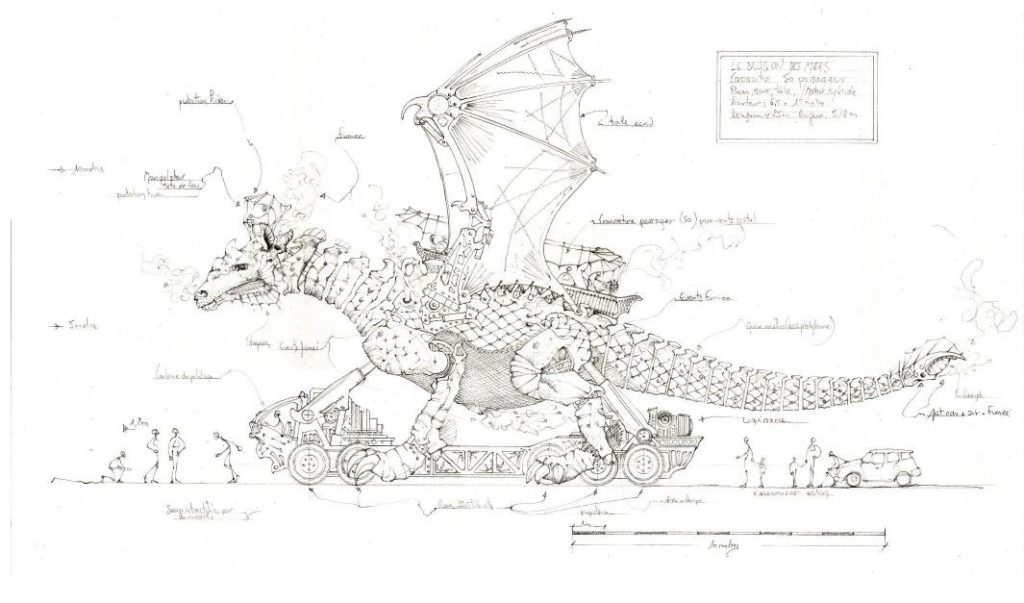
The dragon was designed and constructed by the incredible and imaginative La Machine Company which is based in Nantes where it produces the world’s greatest machines. The dragon roams through the streets of Calais, puffing smoke and fire and carrying people on its back.
He lives on the beach and you can see him from the ferry. More about the Calais Dragon and his family .
Outside Calais

Calais stands in the section of the north France coast that parallels the white cliffs of Dover which you can easily see on a clear day.
For great walks and World War history, make your way to Cap Blanc Nez and Cap Gris Nez. Set among the dunes, the two headlands stand high above the sea. You can hire electric bikes and visit some of the attractions along this stretch of coast.
Or just stand on the headlands and think of the history that keeps Britain and France forever linked.
Guide to Calais: Where to Stay
My favourite hotel in Calais is the old-fashioned, but delightfully renovated 3-star Hotel Meurice . It’s near the beach, a few minute’s walk into the center of town and right by the Rue Royale where you’ll find many of Calais’ restaurants. A grand staircase at the entrance sets the scene, and the hotel is particularly popular with British visitors. It has a good bar that buzzes into the late evening. The Meurice is at 5 & 7 rue Edmond Roche, tel: + 33 (0)3 21 34 57 03.
For a modern hotel, I recommend the Ibis Styles Calais Centre , in the heart of the old town at 46 Rue Royale.
There’s a comprehensive list of Calais hotels for all budgets on the Calais Tourist Board website.
There are plenty of budget hotels in Calais. Here’s a guide to the main budget chains .
Guide to Calais – Eating Out
It comes as a surprise to many, but Calais is fast gaining a reputation as a gourmet destination. There’s been an influx of young chefs, adding to the several already popular restaurants, so there’s plenty of choice. Calais is known for its fish, so take advantage of flappingly fresh ingredients.

Histoire Ancienne is one of my favourites. Owned and run by chef Patrick Comte with his wife managing front-of-house, the bistro-style restaurant has an Art Deco style interior. It’s welcoming and offers very good value. 20 rue Royale. Tel: +33 (0)3 21 34 11 20. Menus run from €21 to €34. Open Tues to Sat lunch and dinner. Closed two weeks in July.
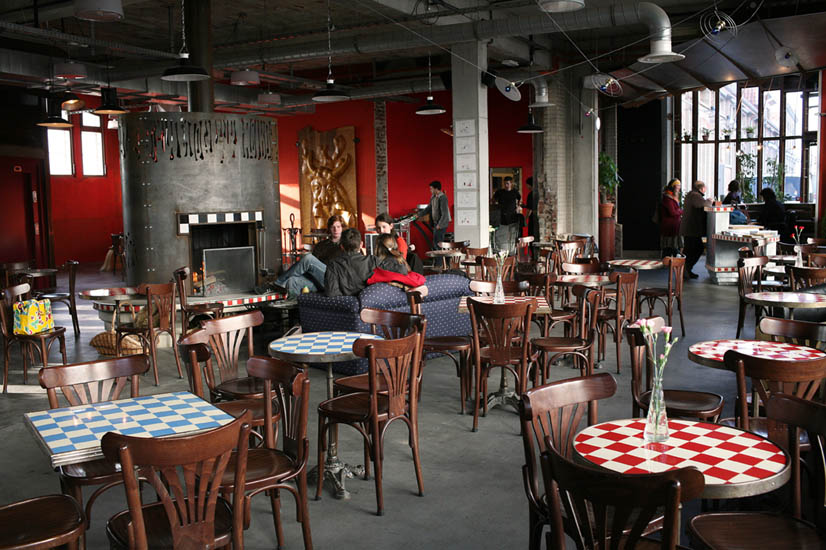
Les Grands Tables du Channel offers a different experience. It was decorated with the help of François Delaroziere of La Machine which produced the dragon so the decor is industrial. The cooking is equally as imaginative. It’s housed in a contemporary arts complex that was once an abattoir (slaughter house) but now puts on a series of unusual concerts, art shows, installations and more.
Choose the bistro for lunch. Dishes are imaginative and well priced around €9 to €13.50 for dishes like Morteau sausage with a Bearnaise sauce to traditional potjevlesch. Desserts are €4 to €6.50. The restaurant is closed for August. 173 Boulevard Gambetta. Tel: +33 (0)3 21 35 30 11. Menus at €19. Check the website for opening times during summer 2020.
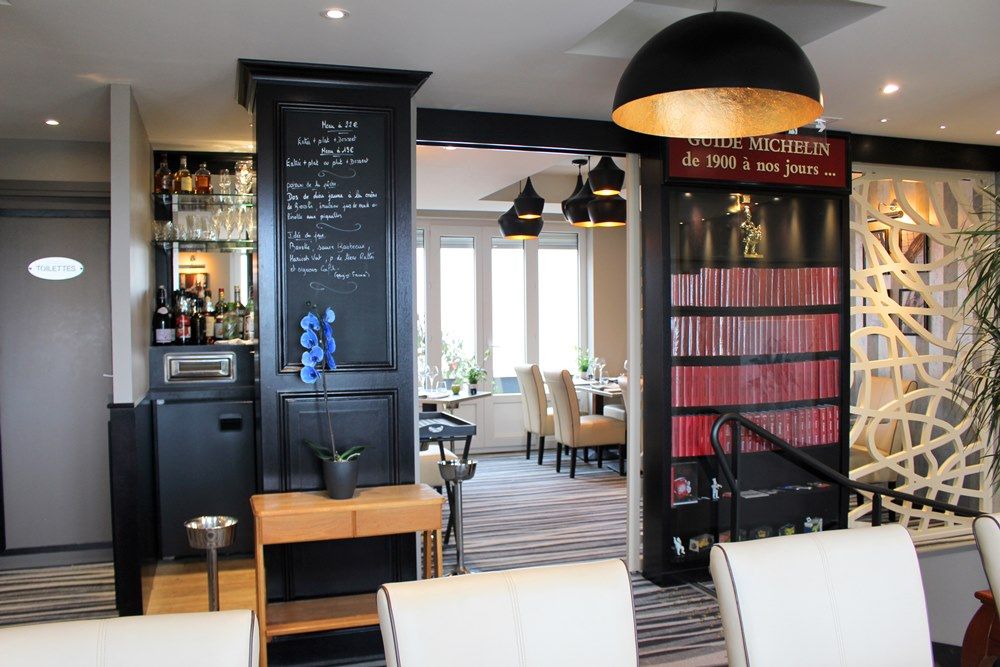
You’ll find Le Grand Bleu down by the outer harbor overlooking the sea and the fishing boats. It’s always buzzing with locals who come for the accomplished and innovative cooking. Go for a starter like Thai shrimp soup with light coriander cream and mains like Coquille St Jacques in a cashew crust with chanterelle mushrooms. Meat dishes might include a perfect duck dish marinated in a barbecue sauce with crispy potatoes and young seasonal carrots. 8 Rue Jean Pierre Avron, Quai de la Colonne. Tel: +33 (0)3 21 97 97 98. Menus at €21, €25, €35 and a ‘grande bouffe’ style menu at €50.

Guide to Calais Food and Wine Shopping
If you’re in Calais, take time to do some food and wine shopping. You’ll be surprised at the choice. But it’s not all in one area of the city so if you have limited time you may need to do a little research first to decide where to go.
Food Shopping in Calais

La Maison du Fromage et des Vins is a good place for cheeses and wine, and also other deli products like jams, cookies and specialist fish soup. Open Mon 3-7pm, Wed-Fri 8.30am-12.30pm & 3-7.30pm; Sat 8.30am-1pm and 2.30-5.30pm, Sun 10am-1pm. Annual closure last week of July and first week of August and first 3 weeks in January. 1 rue Andre Gerschell (on the corner of the Place d’Armes), Tel.: 00 33 (0)3 21 34 44 72.
L’Atelier du chocolat is part of a chocolate company founded in Bayonne in 1951 so the family running the shop knows a thing or two about chocolate. Here you’ll find the best chocolates plus seasonal creations at Halloween and of course Christmas varieties. And you’ll also find a chocolate version of the Calais Dragon though it doesn’t produce fire and steam. But like all specialists, their chocolates are expensive. Open Tues-Sat 10am-7pm; Sun 10am-1pm 66 rue Royale, Calais. Tel: +33 (0)3 91 91 62 55 Website
Fish and Shellfish

Les Delices de la Mer With the owners buying directly from local fishermen, you can’t go wrong here. And if there’s a special catch they put it on their website so you can telephone and order from it. Open Tues-Sat 8.30am-12.30pm & 2.30-7pm; Sun 10am-12noon 160 Boulevard La Fayette, Tel.: 00 33 (0)3 21 34 64 57. Website
Huitriere Calaisienne This is the place for crabs, lobsters, oysters and all kinds of shellfish that make up those magnificent Plateaux de fruits de mer. Open Wed-Sat 9am-12.30pm & 3-7pm; Fri, Sat 8.30am; Sun 9am-12noon 12 Blvd La Fayette, Tel.: 00 33 (0)3 21 36 50 97 Website
Guide to Calais Wine Shops
In my opinion the best wine shop in Paris is Calais Vins . This great wine emporium is easy to find and it’s family run. The staff speak English (pre- Brexit 20% of their customers were British) and are there to help you taste and choose your wines. They also have beers – many beers, a good range of sparkling wines and prices from the extremely modest to the skies. They source many of the wines individually, so you’ll get small owner-run vineyards here. They also run a good VAT reclaim scheme which you can use easily. Check that out here. There’s also a Philippe Olivier cheese shop to one side, stocking a huge range of the best French cheeses and there’s a good bread shop and snack bar. And it’s open on a Sunday which is a great advantage. Open Mon-Sat 9am-7pm; Sun 9.30am-6pm. Zone Curie, Rue Gutenbert, Tel: 00 33 (0)321 46 40 40. Website Calais Vins is located just off the A16 motorway, exit at junction 44 ‘Calais St Pierre’. A few minutes’ drive from the port of Calais and the Eurotunnel terminal.
Bar a Vins is a great wine shop run by the enthusiastic Luc Gilles. It’s in central Calais and is a shop and wine bar. Open Mon-Sat 9am-7pm, Sun 9.30am-3pm. Closed Wednesday. 52 Place d’Armes, Tel.: 00 33 (0)3 21 96 96 31
Those Famous Calais Hypermarkets
Cit é Europe , a huge shopping mall of many different shops, including a large Carrerour, is the major destination for Brits shopping in Calais. Carrefour is open Monday to Wednesday 8.30am-9pm, Tuesday, Saturday to 8pm, Friday to 9pm. Cité Europe is open Monday to Saturday 10am-8pm, Friday and Saturday to 9pm. 1001 boulevard du Kent, Tél : 03 21 46 47 48.
Auchan to the west of Calais, is open Monday to Saturday 8.30am to 9.30pm. Avenue Roger Salengro. Tel.: 00 33 (0)3 21 46 92 92.
Markets in Calais
There are two main markets in Calais:
Place d’Armes (near the Port) on Wednesday and Saturday mornings. It’s good for local produce and like all the markets, at its most bustling on Saturdays.
Place Crévecoeur on Thursday and Saturday, Sunday mornings. Saturday is the day to aim for. Good food stalls selling locally produced cheeses, charcuterie, veggies and more plus household products and general stalls selling clothes, textiles and lace.
Guide to Calais – General Information
In Pas de Calais Department (62) Hauts de France Region 38 km (24 miles) from the English Coast
Tourist Office 12 Boulevard Clemenceau. Tel: +33 (0)321 96 62 40
Pas de Calais Department website
Getting to Calais
By car from the UK: If you’re taking your car, take the ferry from Dover (here’s the guide to ferry travel from the UK). Or choose Eurotunnel Le Shuttle .
By train from the UK: Travel on Eurostar taking from 1hr 36 mins from London St. Pancras International to Calais Fréthun, a distance of around 94 miles/152 km. Normally 5 trains per day travel from London St-Pancras to Calais. Tickets for this journey start from £49.32 when booked in advance. It’s a 10-minute train ride from Calais Fréthun to Gare de Calais Ville in central Calais at 46 Avenue du Président Wilson. Tickets booked in advance are €1.20.
By train from other French cities: From Paris: Take the TGV from the Gare du Nord to Calais Fréthun taking 1 hr 37 mins. From Lille: Take the TGV from Lille to Calais Ville, taking 30 mins.
Getting around Calais
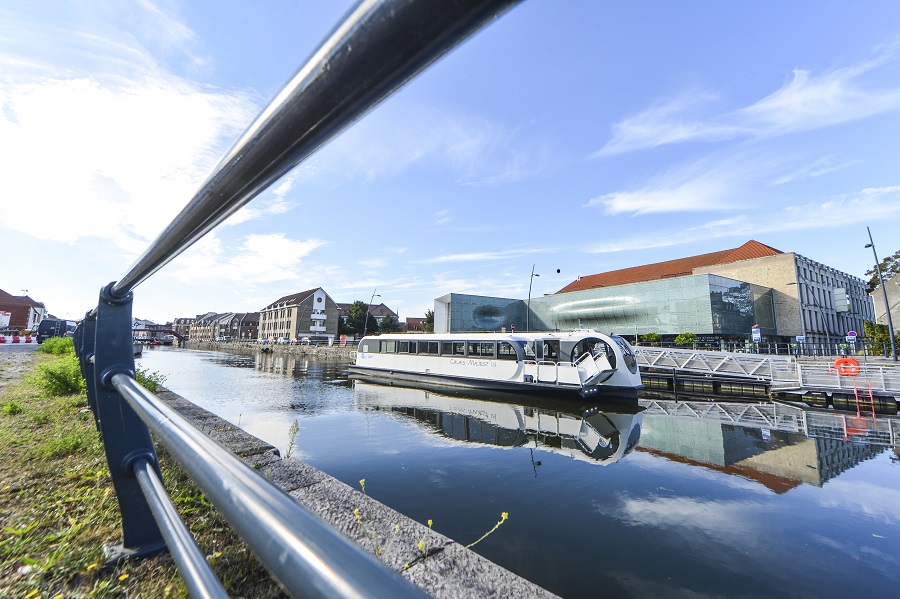
Public transport is good, and what’s even better, it’s free.
More to see in Pas de Calais
The Commonwealth War Graves Commission Center gives you a fascinating insight into how the international institution looks after war graves around the world. Eperlecques Blockhouse was designed as a liquid oxygen factory and the place where Hitler’s V2 rockets were assembled. The secret Mimoyecques Fortress where the V3 was developed.
Visit nearby Hardelot for its Victorian castle and Entente Cordiale connections and its Elizabethan theatre.
In winter there are plenty of North France Christmas Markets to visit.
Privacy Preference Center
Consent management, advertising.
Top Things to Do in Calais, France - Calais Must-See Attractions
Things to do in calais.
- 5.0 of 5 bubbles
- 4.0 of 5 bubbles & up
- 3.0 of 5 bubbles & up
- 2.0 of 5 bubbles & up
- Budget-friendly
- Good for a Rainy Day
- Good for Kids
- Good for Big Groups
- Good for Couples
- Hidden Gems
- Adventurous
- Honeymoon spot
- Good for Adrenaline Seekers
- Things to do ranked using Tripadvisor data including reviews, ratings, photos, and popularity.

1. La Cite De La Dentelle Et De La Mode De Calais

2. Calais Beach

3. l'Hotel de Ville de Calais
4. The Burghers of Calais

5. Musee Memoire
6. Compagnie du Dragon
7. Calais Lighthouse

8. P&O Ferries Dover - Calais

9. Eglise Notre-Dame
10. Monument Yvonne et Charles De Gaulle
11. Parc St Pierre
12. Tour du Guet
13. Musee des Beaux-Arts de Calais

14. Parc Richelieu
15. Le Beffroi de Calais

16. Fort Risban
17. Jardin Tudor

18. Place d'Armes

19. Eglise Saint-Pierre
20. Le Théâtre de Calais

21. Le Fort Nieulay

22. Calais Wine Superstore

23. La Citadelle

24. Le Monument des Sauveteurs

25. P & O Ferries Calais to Dover
26. Port de Calais

27. Stade Julien Denis
28. Royal Kids Parc De Jeux

29. Port De Plaisance De Calais
30. la cave de lilie, what travellers are saying.


Calais – A Travel Guide and the Best Things to Do in Calais (Frankreich)
Table of Contents
Calais – France (Frankreich)
Visiting Calais – France (Calais Frankreich) can be an exciting and fulfilling experience. It is located in the north of France on the Strait of Dover. It is a beautiful port city with plenty to offer in terms of activities and attractions. From historical sites to modern attractions, there is something for everyone to enjoy. So if you’re looking for an unforgettable experience in France, read on for a guide to the best things to do while you are there!
Discover the Beauty of Calais
Calais is a beautiful city located in the north of France. It is known for its stunning architecture, its rich history, and its delicious food. It is also home to a number of prestigious universities, making it a great place to study. If you’re looking for a city that has it all, this is the perfect place for you.
This is a town in northern France that is best known for its role as a ferry port. This is located on the Strait of Dover, which is the narrowest point in the English Channel. It was first settled by the Romans in the first century AD. This city became an important trading town in the Middle Ages and was frequently contested between England and France. Finally, it came under English control in 1347. Calais remained under English control until 1558 when France recaptured it.
This city is now a major tourist destination, with people coming from all over to enjoy its beauty. It is home to many beautiful parks and gardens, as well as a number of museums and art galleries. There are also a number of excellent restaurants in this city, serving both French and international cuisine. Whether you’re looking for a relaxing vacation or an opportunity to explore French culture, it’s an ideal destination.
Explore the History and Culture
Calais is full of history and fascinating cultural attractions. The Château de Guînes is a castle built in 1382 that overlooks the town. This castle has stunning views of the city below and plenty of trails with gardens to explore. The Museum Passchendaele 1917 commemorates one of World War I’s most famous battles, which took place near Calais in 1917. This museum features displays about the battle as well as artifacts from both sides.
The Calais Dragon
Calais has a dragon constructed of steel and sculpted wood with astonishing dimensions: 25 meters in length, 12 meters in height, and 5 to 17.5 meters in width, weighing 72 tons. It can spew water, fire, and smoke and cruise down the shore at a pace of 2.48 mph (4 km/h).
One of its most notable characteristics is its expressiveness: its eyes, eyelids, and ears are all moveable. Furthermore, it is agile due to its 280-movement capacity organized by 4 to 6 machinist pilots. Take a 45-minute ride on its panoramic deck cut into its back and enjoy a spectacular view of the beach. The Dragon wakes glides down the beach, and a one-of-a-kind voyage starts. Enjoy a 360° panorama of Calais landscapes set to the rhythm of this remarkable animal made by French artist François Delaroziere.
Related Article: Dinant, Beautiful city in Belgium
Things To Do when you are In Calais
Consider taking a vacation to this beautiful city to see everything that this ancient city has to offer, as well as the surrounding coastline and protected natural environment.
the city is divided into two different areas: the modern town of St-Pierre and the old town, known as Calais-Nord. While St. Pierre, is home to the vibrant city’s retail and dining sector, Calais-Nord is situated on an unusual man-made island surrounded by canals and harbors.
View Impressive Buildings
Those who like architecture will enjoy visiting some of Calais’s stunning buildings.
The first stop should be the Town Hall, which features a 75-meter belfry and has been designated a UNESCO World Heritage Monument. Although it seems to be an antique structure, Calais’ Town Hall was erected in the twentieth century but was planned in the Renaissance revival style, giving it a historic appearance.
Calais on the Coast
Another amazing structure worth seeing while in town is the Calais Lighthouse. If you want to reach the summit, you must climb a total of 271 steps, but you will be rewarded with views that may extend as far as Dover on a clear day. The lighthouse is situated in the Courgain Maritime sector, which is Calais’ ancient fishing zone and is worth investigating.
Take the difficult but rewarding hike to Calais Lighthouse for the panoramic city and ocean views. On a clear day, the famed white cliffs of Dover may be seen, while on a stormy day, the spectacular natural scenery on the English Channel can be seen.
Lighthouse of Calais
Long walks around the vast coastline of the city will fill your lungs with fresh sea air. The beaches are also ideal for both resting and participating in water sports. View this stunning, rugged landscape and its remarkable chalky tone from the peak of Cap Blanc Nez.
Beaches of Calais
During the summer, the beaches of this city are a perfect spot to catch some sunshine while relaxing on the golden sand. It is entirely safe to take a dip or swim in the sea to cool off since the water is shallow enough for everyone to enjoy even when it is frigid outside of the warmer season.
One of the beach’s biggest attractions is the white beach huts that line the sand, and along the promenade, you’ll find cafes and restaurants, as well as a great game of mini golf!
Just 10 kilometers west of Calais lies the picturesque Cap Blanc-Nez beach, which features white cliffs similar to Dover’s iconic landmark. Walk up to the top of the headland for spectacular views of Great Britain, and keep an eye out for the ferries sailing over the Channel!
Shopping in Calais
In order to shop in French supermarkets and save money on regional food, many British visitors come here. The Rue Royale is the most well-known main street in the city. It has recently undergone substantial renovations and is now home to a variety of shops, cafés, and bars. Hugo Boss, Lacoste, Nike, Calvin Klein, and Guess can all be found among the hundreds of designer boutiques located under one roof on Marques Avenue for amazing rates on well-known brands.
Visit Local Attractions
If you’re looking for things to do during your visit to Calais, there are plenty of local attractions that will keep you busy.
If you like fine arts and historic paintings you should visit Musee des Beaux-Arts. It is the first gallery of Fine arts in the Nord-Pas-de-Calais region. The museum has got a large collection of paintings and sculptures. The permanent collections are composed of old masters such as Van Dyck, Rubens, and Ingres as well as Georges Braque, Marc Chagall, and Pablo Picasso.
You might consider visiting the most famous Monument in the City, the Monument Yvonne et Charles De Gaulle. Located on the Promenade des Anglais, this monument is a tribute to Yvonne de Gaulle and Charles de Gaulle who were two very important figures in French history.
It was built by sculptor Paul Cornet in 1977, and for more than 30 years served as a gathering place for people from all over the world. People also hang out here and it is good for tourists who are looking for a place to sit down and relax while they check out their surroundings.
Enjoy Nature and Outdoor Activities
Calais also offers plenty of nature activities that are perfect for those who love being outdoors. With its location near the English Channel, there are numerous beaches nearby where visitors can enjoy swimming or relax on the sand. Visitors can also take boat tours along the coast or go fishing in one of many local rivers and streams. For those seeking even more adventure, there are plenty of hiking trails throughout the town with breathtaking views at every turn!
Plan your Trip
Calais is full of amazing sights and experiences that will make your visit unforgettable. Whether you’re visiting with family or friends, this port city has something for everyone! From its rich history to its outdoor activities, there’s no shortage of things to do while exploring this beautiful French destination! So Plan your travel to discover all this beautiful port city has to offer!
For more, do check out our other sections at travel-exotica.com
Related Posts
Dinant citadel – the beautiful city of belgium,tourism guide, lauterbrunnen, paradise of earth – camping and must things to do, iceland : beautiful country in europe – guide 2024, leave a reply cancel reply.
Your email address will not be published. Required fields are marked *
Save my name, email, and website in this browser for the next time I comment.
Notify me of follow-up comments by email.
Notify me of new posts by email.

- Destinations
- Last Minute
- Travel Guides

Visit Calais in the North of France | An easy journey from the UK
- Calais has sometimes been tarnished by a bad reputation, but the town is rebuilding its image by becoming the leading seaside resort on the Côte d'Opale.
- Calais beach
How to get around Calais ?
How to come to calais from the uk , why should you visit calais , where to go shopping in calais , what to do in calais , where to sleep in calais , what to do near calais , do not rely on the "bad reputation" of calais.
Although Calais has sometimes been tarnished by a bad reputation, the town is gradually rebuilding its image by becoming the must-visit seaside resort in Northern France. The people of Calais love their town and its surroundings and intend to continue showing off all its riches! Calais is a must-see stopover on your stay on the Côte d'Opale, and the town does everything it can for its residents and tourists alike. In the past, Calais was seen as a stopover, but today it's well worth a visit, making it an ideal destination for a day out or a holiday.
What to do in calais ?
1. visit the city centre and discover its history and culture.
The richness of Calais town centre is often overlooked. Yet it is proof that there is much more to Calais than its port and the Channel Tunnel. On the contrary, it's packed with historic monuments: the Watchtower, the Citadel... Not forgetting the famous 75-metre-high belfry, which offers a breathtaking view. Rodin's masterpiece, the famous statue of Les Bourgeois de Calais, also takes pride of place on the Place de l'Hôtel de Ville. The Musée des Beaux-Arts is an ideal place to find out more about the sculptor. If you're more interested in the Second World War, explore the Musée Mémoire 39-45. Immerse yourself in the history of this magnificent town and discover all its monuments!
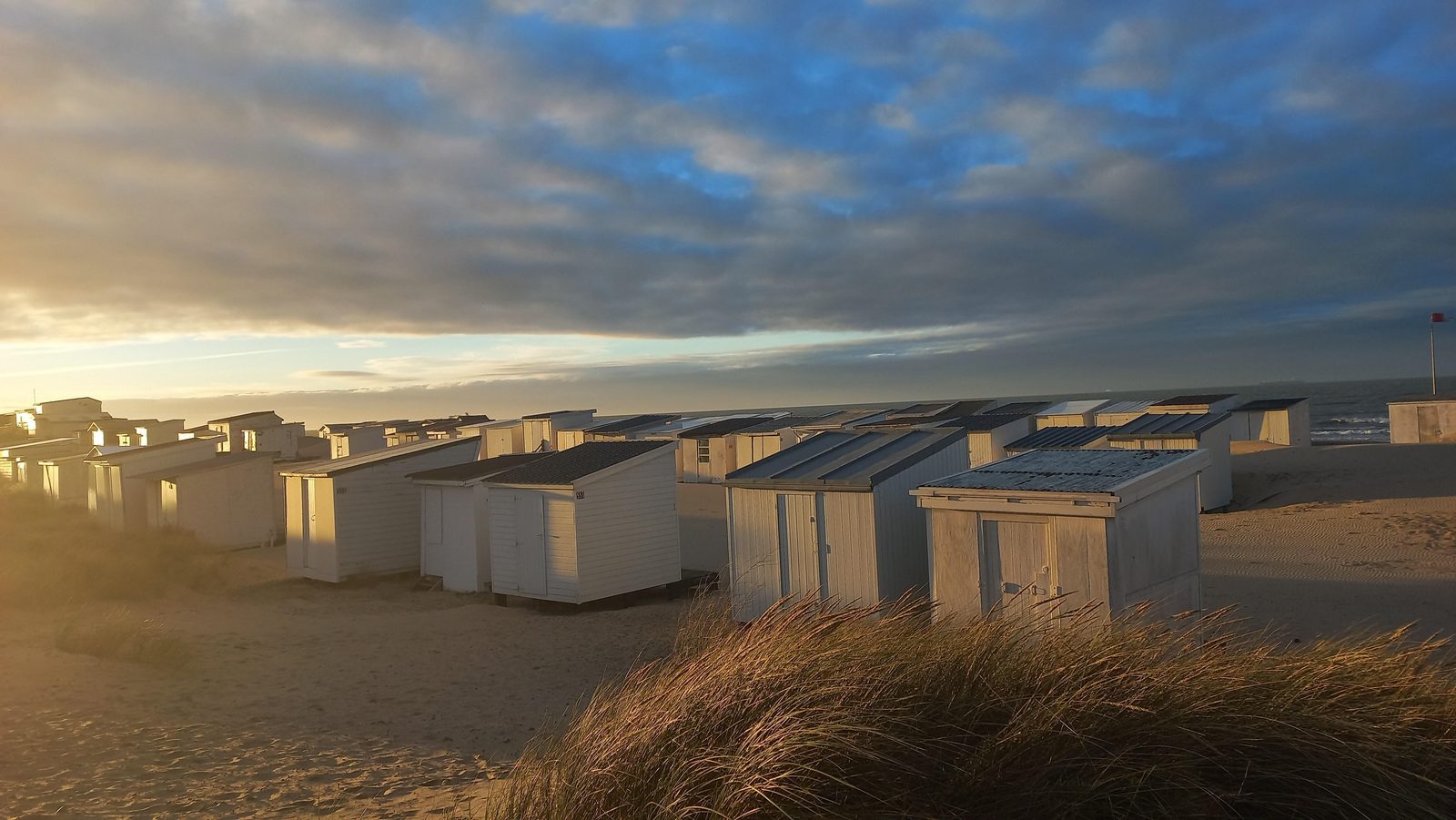
2. enjoy the long beach at calais
Calais has a superb white sandy beach stretching for several kilometres. Here everyone comes together: Calaisians themselves, tourists lounging among the famous cabins. Recently, the town has completely renovated its seafront, turning it into a magnificent seafront to walk along, summer and winter alike. There are plenty of activities to keep you busy, including a children's playground, a skatepark, the Calais dragon and not forgetting the ice-cream vendors lining the beach! We also recommend taking a diversion to the pork side of the harbour, where you can admire the daily ferry trips between Dover and Calais. erdiensten tussen Dover en Calais kunt bewonderen.
3. see the most beautiful panoramas
Do you love a good view? Head for the lighthouse. From here, you can admire the whole of Calais, its port and the sea. When the weather's fine, you can even see the English coastline! Calais is one of the closest towns to the UK, and many British and French people pass through Calais. The town is served by ferries, the Eurotunnel (from Coquelles) and the Eurostar from Calais Fréthun station. In short, Calais represents a border in itself, making it a multicultural town where it's not unusual to hear English spoken as you walk around!
The best way to get around Calais is to have a car. You can either come with your own or you can find several rental agencies in the city of Calais. It's an easy way to get around, especially if you're planning a road trip around the region.
However, if you have no choice but to rely on public transport to visit the city of Calais, we have a solution. There are several bus lines in Calais which serve the city. In addition, Calais is not a very important city, so you can also get around on foot.
4. ENJOY THE AREA AROUND CALAIS
Next to Calais, we recommend a visit to Cap Blanc Nez, which is only a twenty-minute drive away and will blow your mind! The beach at Sangatte is also very pleasant for those looking for somewhere a little quieter. The Oye Plage nature reserve is also incredible for those who enjoy a walk in the heart of nature. Generally speaking, Calais is an accessible town, with free car parks and shuttles available to make your visit to Calais easier whatever the season.
holiday rentals near calais
If you are looking for a hotel in Calais or a holiday rental near Calais we advise you to stay in Evancy residences. Evancy Bray Dunes, Evancy Oye Plage or Evancy Boulogne sur Mer are located near Calais. Evancy has comfortable flats offering good value for money: go here to book your stay on the Opal Coast.

The journey between France and England is very simple and the Brexit will not change the proximity between our two countries. You should know that there are three different ways to get to Calais. The first is to take the ferry (with your car or as a pedestrian) from Dover to the port of Calais.
Then you can take the shuttle and cross the Channel Tunnel from Folkestone to Coquelles (which is an area just outside Calais). The last option if you want to go fast is to take the train: the Eurostar leaves from London or Ashford and reaches Calais in 1 hour.
As you can see, you have no excuse! Reaching France is very easy and will suit everyone! If you want to come as a family, with your pet or as a couple, you'll find the solution that suits you best.
It is common for people from the UK to just pass through Calais. It's a shame though ! You have to know that Calais is a fantastic city and it is very nice to spend a few days there . The good news is that you can easily make the round trip from England over the day.
But if you have a bit more time to spend in France we advise you to spend a few days in Calais to explore the city and its surroundings . To fully enjoy the city and the wonders that surround it, we advise you to stay in our residence in Oye-Plage, for example, which is only a few kilometres from Calais.
It is a city full of treasures, you will love to discover its architecture, history & culture. The town also has a long sandy beach which is very nice. In summer as in winter it is very pleasant to stroll along the seafront, between the beach and the port while enjoying an ice cream or a waffle! You will even be able to watch the incessant ferry journeys between Calais and England .
If you wish to make the most of your stay in France and enjoy shopping, Calais is the ideal place. Indeed you can go to the Cité de l'Europe in Cocquelles just next to Calais to do your French shopping. It is one of the largest shopping centres in the region with 140 shops. The Cité de l'Europe shopping centre also has a hypermarket, a cinema, a playground where you can bowl, play billiards etc. There is also a food court with bars, restaurants and fast food outlets.
Just next door you will also find the Channel Outlet Store where you can find brand name products at low prices. The Calais shopping centre is very conveniently located right next to the entrance to the Eurotunnel, ideal for last minute shopping before heading back to the UK or continuing on to France.
There is a lot to do in the city of Calais. To get started we would advise you to visit the heart of the city.
The city is full of wonderful historical monuments such as the Watchtower and the citadel. The belfry is also a must during a stay in Calais ! You can climb the steps and admire the view from a height of 75 metres : you will discover a breathtaking view! You can take the tour in small groups, which will allow you to learn a little more about this early 20th century building.
If you're fancy about Art & history you should definitely go to the Museum of Fine Arts ! You'll discover some very nice artwork such as "The Citizens of Calais" which is a masterpiece of sculptor Auguste Rodin. In general, there are permanent and temporary exhibitions with works ranging from classical to contemporary.
If you're more interested in the Second World War then you should definitely go to the Museum of Memory 39-45'.
Finally a visit in this town cannot be made without a beautiful panoramic view of the city! Go to the Calais lighthouse, you'll find the most amazing view over the city, the harbour & the sea. When the weather is beautiful outside, you can even see the English coastline ! Incredible, isn't it ?
A visit to the port of Calais is also essential as it is the place where the city comes alive. In particular, you will be able to see the Watch Tower which dates from the 13th century. From the port, you will not be far from the beach. Calais' beach is several kilometres long , making it ideal for relaxing and enjoying various sporting activities.
Speaking of sports activities , there are many in Calais. There are plenty of things to do such as hiking, kite flying, cycling or kitesurfing. It all depends on what you like to do and what attracts you the most! If you have never done kite surfing or sand yachting don't worry, the clubs offer initiations for those who have never done it before.
Still not convinced? If you are rather attracted by fashion & local handicrafts we recommend you to visit the international city of lace and fashion . It's an incredible museum that traces the history and craftsmanship of an entire region. Did you know that on Kate Middleton's wedding dress there was Calais lace?
Finally Calais has had a little novelty for some time. Indeed if you come to visit the city of Calais you might see a huge dragon in the city centre! The dragon of Calais is walking on the beach dike and it is possible to take a little walk on its board.
The walk takes about an hour, counting boarding and disembarking. It is an original trip that will please children and adults alike! You can go and see it for free but if you wish to board it will cost €9.5 per adult and €7.5 per child. If you wish to book your ride, go to the official website of the dragon of Calais !
We would be delighted to welcome you in the comfort of our Evancy residences which are located near the city of Calais. To be as close as possible to the city, we recommend you to stay in our holiday residence in Oye-Plage which is located only ten kilometres away.
If you plan to visit the town for just one day and stay elsewhere on the Opal Coast , you can stay in our other residences in Boulogne-sur-Mer , Bray-Dunes , Equihen-Hardelot or even Sainte-Cécile . The good news is that wherever you are staying it will be very easy to reach Calais thanks to the motorway that links the whole of the Opal Coast.
If you're looking for more information about this town & about what to do you should visit Calais' website ! In any case we guarantee that you will not regret your visit to Calais and that you will enjoy your french trip there.
You can also make beautiful discoveries near Calais. We even recommend a stay of several days in the town so that you can wander around in the surrounding area, which is just as beautiful.
For example, we advise you to go to Oye-Plage to take advantage of an exceptional natural park: the platier d'Oye. If you are a nature lover you will really love this place which is still preserved and wild.
You can also visit the cities of Dunkirk and Bray-Dunes, which are both very different. Dunkirk is an interesting but rather industrial city, while Bray-Dunes is ideal for a day trip to a typical small seaside resort. Moreover, we have hotel residences which are located only a few metres from the beach of Bray-Dunes.
Further west, you can enjoy the beach at Sangatte. If there is an exceptional place not to be missed, it is the Cap Blanc nez & Cap Gris nez: a place classified as a UNESCO heritage site and which you must absolutely visit. The small villages of Wimereux, Wissant or Ambleteuse are also very cute and all have their own little charm. These are the perfect places to discover the charm of the French coast without being too far from Calais.
When we talk about Calais it is not always to talk about positive things. You may have heard about it on television on frightening themes : asylum seekers, migrants, the Brexit, the blockades at the port... but Calais is not just that and you should know that its situation is tending to improve.
You should not be afraid to visit Calais because of the jungle in Calais, the migrants or the difficult situation with the Brexit. None of these elements will prevent you from having a good stay in the city. On the contrary, Calais is a lively city that is looking forward to welcoming you.

Calais: The Glittering Triumph of Anne Boleyn
Let me introduce you to one of the most beguiling cities of Tudor England: Calais. In the first half of the sixteenth century, Calais was the only jewel of English sovereignty that remained as part of the French mainland. It was a remnant of the vast empire of England’s Plantagenet dynasty; a dynasty that had once reigned across not only England but much of northern and western France, as far south as Aquitaine.
For anyone interested in the story of Anne Boleyn , Calais is a fascinating and significant location. This is not only because this charming city, once full of architectural delights, has been almost completely obliterated (and now, hauntingly, exists simply as a ghost in the imagination), but because during four glamorous weeks in October / November 1532, Anne Boleyn probably surrendered her virginity to the king after six long years of courtship. It was a monumental moment in her story.
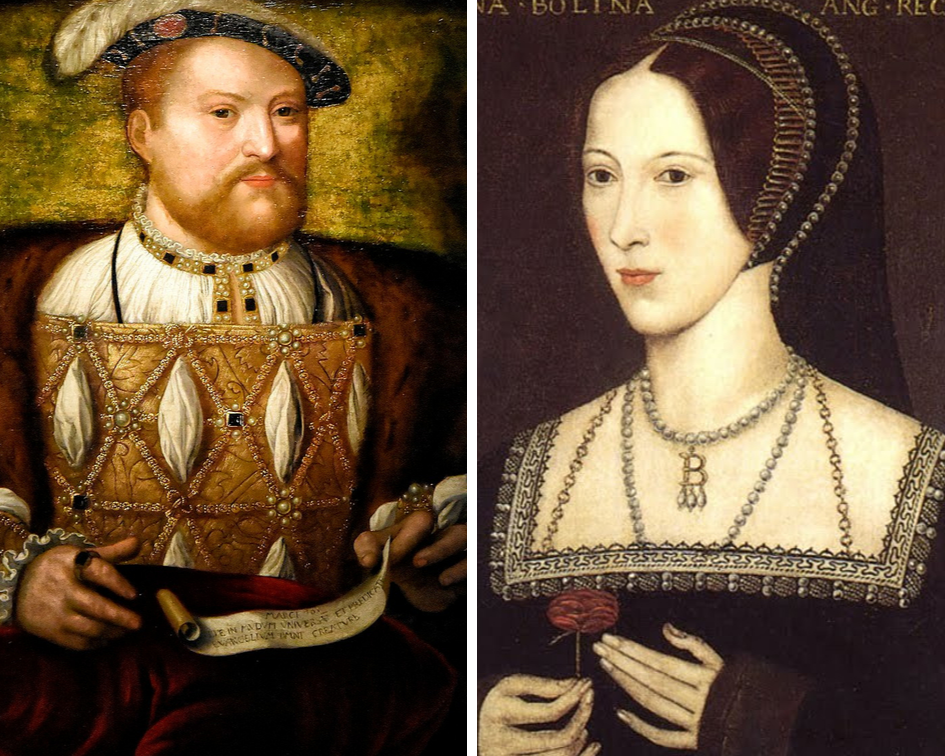
Ever since I started researching Calais for In the Footsteps of Anne Boleyn , I have been mesmerised by this ancient, lost town. I remember poring excitedly over old town plans; sketches of the city’s skyline; descriptions of the main streets and prominent buildings, as I pieced together how Calais looked during its Tudor hey-day. I walked the streets in my imagination. Sights, sounds and textures filled my mind. Eventually, it was easy to visualise the royal procession as it wound its way from the port through the city’s narrow streets and open squares, heading toward the royal lodgings, which had been made ready at the Exchequer.
To celebrate the anniversary of the historic 1532 visit to Calais, which took place in late October and November of that year, I am posting an adapted excerpt from In the Footsteps of Anne Boleyn , in which we go in search of Tudor Calais. This is just one entry, in over seventy, in a book which tells the story of Anne’s life through the places she visited and called home. If you wish to purchase your signed copy, read on to the end.
Calais: The Tudor Gateway to Continental Europe
Dover to Calais was, and still is, the shortest crossing point for ships traversing the English Channel. During the sixteenth century, Calais was part garrison, part trading town; the last outpost of English soil before reaching the rest of the continent and beyond. Within its fortified walls, there was a grid-like network of narrow streets, packed tightly with fine medieval houses owned by affluent Calais merchants. Every so often, these streets would open up into spacious squares used for trading, recreation and the gathering of its townsfolk. A plan of the town, taken from The History of the King’s Works , Volume III , is shown below:

We can only assume that it was when travelling to take up her position as maid-of-honour to the Regent, Margaret of Austria, in 1513, that the twelve-year-old Anne first came to Calais. Perhaps she also greeted the arrival of Mary Tudor on her way to be wed to the ageing King Louis XII at nearby Abbeville. Unfortunately, we have no record of exactly where and when Anne joined the English contingent serving the new French queen. However, she most definitely would pass through the town again on her way back from France in the winter of 1521; no doubt a woman transformed by her social and religious education at the sophisticated French Court.
Sadly, nothing is recorded of Anne’s movements through the town during that time. Yet, the same cannot be said for her only other visit to Calais in the autumn of 1532. Anne would return in triumph at Henry’s side as the newly created Marquess of Pembroke; she was at the pinnacle of her power and influence over the king. The trip was planned as a great celebration, during which the French and English kings would reaffirm their pact of mutual support against Charles V. Anne was also to be formally received by the French monarch, Francis I, thereby effectively endorsing her position as Henry’s queen-in-waiting. It was a significant moment on the political stage of Europe for the thirty-one-year-old.
Tudor Calais – Rediscovering a Lost Town
Tragically, the bombing of Calais during WWII destroyed virtually every remnant of the town’s medieval grandeur. However, due to the efforts of English antiquaries in the nineteenth century, we do know something of the buildings that had survived over the previous 300 years. Combined with contemporary accounts of the town and its history, the modern-day time traveller can yet walk in Anne Boleyn’s footsteps and gain some satisfaction by seeing beyond its unexciting present-day façade, to recreate in their mind’s eye the sixteenth-century town.

Perhaps the best way to begin this virtual tour is to approach Calais as Anne must have done – by boat. A ferry leaving from Dover on a clear day will soon reveal the shores of France looming on the horizon. Imagine the excitement of the twelve-year-old Anne, setting out on a journey of incomparable adventure, or in eager anticipation of her triumphant return in 1532.
A view of the town as it was in the sixteenth century, taken from the Chronicle of Calais in the Reigns of Henry VII and Henry VIII , shows the skyline of Calais as Anne would have seen it approaching across the English Channel from Dover. The town was fortified by enormous city walls. Along its length, a series of towers provided a mixture of both accommodation and defence. The Lantern Gate, in the centre of the picture, was the principal gate of the town. Above the gateway, the following words were inscribed: ‘ Then shalle the Frenchman Calais winne, when iron and leade lyke corke shall swimme’. Unfortunately, such unshakeable belief would not prevent Calais eventually falling into the hands of the French during the reign of Mary I.
Like all the gates of the city, the Lantern Gate was locked during an elaborate ceremony every night. Referring to the image above, inside the city walls, follow the long-lost outline of four key buildings which made up the town’s impressive skyline; the churches of Our Lady to the left and St Nicholas to the right, whilst the exquisite medieval structures of the Town Hall and Staple Hall (not to be confused with the Staple Inn, the scene of Anne’s presentation to Francis I at a grand masque on 27 October 1532) stand centrally, directly to the south of the Lantern Gate.
If you dock at Calais today, you will see the gnarled remnants of the old Rysbank Tower over to your right. The ruins of the fortifications are still signposted from within the town itself. Modern-day ferries moor to the east of the town centre. However, if you had been travelling aboard the Swallow with Anne in 1532, your ship would have taken you past the Rysbank Tower to dock against one of Calais’ many quays and jetties, lying directly in front of the old city walls. The image below illustrates this well:
The now-vanished Lantern Gate, whose position is as described above and shown on the street map of Tudor Calais, was the main entrance to the town via Lantern Street, which today is called the Rue de la Mer . This ancient highway opened out into the central Market Place, whose footprint survives today in the form of the Place D’Armes . Only two ancient buildings remain to be seen today in Calais. The first of these is on the south side of the Place D’Armes ; the Tour de Guet is a rare survivor from the Middle Ages, once standing behind the medieval, thirteenth century Town Hall that was destroyed during WWII.
On arriving here, the royal party would have turned right and headed down what was once called the High Street, the then main road heading east-west through the town. This is now called the Rue d’André Gerschel . Henry and Anne made their way towards the now lost church of St Nicholas, where a service of thanksgiving was held for their safe passage across the Channel. Thence, they went on to their lodgings at the Exchequer, situated directly opposite the church.
Here Anne was lodged in a suite of seven rooms, in the splendour that befitted a queen. Sadly, both the Church of St Nicholas and the Exchequer are long lost. The two buildings were situated in the western quarter of the old town and their precise location is difficult to fathom. However, they were oriented facing each other, perhaps somewhere close to where the Rue André Gershel intersects the Rue de la Victoire .

The next notable Calais landmark and one that played a central role in the festivities of the 1532 visit, was located at the intersection of the modern-day Rue Royale and the Rue de Duc de Guise . It is difficult to believe it today, but at this point once stood the most magnificent residence in Calais – the Staple Inn.
Like many of the grand buildings of Calais, its architecture combined Tudor and Flemish styles and was the residence for Henry VIII in 1520, when he travelled to the Field of the Cloth of Gold , as well as for Francis I in 1532. It was indeed here, in the sumptuous rooms of the palace, that Anne made her grand debut before Francis during that very same visit. Along with six of her ladies, she danced for him, and the French and English courts, at a masque held at the Staple Inn on Sunday 27 October.
The Chronicler, Edward Hall, provides us with a wonderful account of the royal visit, including how the Staple Inn was sumptuously decorated to receive the French king. He describes it being ‘hanged with so rich verdore, as hath not been seen, the ground of it was gold and damaske, and all ouer the tuftes and flowers, were of Satten, Silke and Siluer, so curiously wrought that they seined to growe, euery chamber was richer, and other: the second chamber all of Tissue, with a clothe of estate of nedle worke, set with great Roses of large pearle. The third was hanged with Veluet, vpon veluet pirled grene and Crimosyn, and embraudered ouer with braunches, of flowers of Gold Bullion, and garnished with armes and beastes of thesame gold, set with pearle and stone.’
If you turn out of the Rue Royale and into the Rue de Duc de Guise , you will soon come across Rue Marie Tudor on your right; across the entrance to this street once stood the original gateway to the Staple Inn. Fortunately, it was captured in an old photograph, taken around the turn of the twentieth century.

The only other survivor from Tudor Calais is the church of Notre Dame , or ‘Our Lady’, as it was known in Anne’s time. It was also called the ‘Chruch of Sainte Marie’. Edward Hall recounts how both Henry VIII and Francis I rode to the church every day to hear Mass together.
You can reach it by walking right the way along the Rue de Duc de Guise, until you join the Rue de Seigneur de Gourdan . It is worth a visit; just knowing that many kings and queens of France and England have prayed here in centuries gone by. Also, of particular note to the Tudor enthusiast, is the sixteenth-century tomb of John Bourchier, 2nd Baron Berners, who is buried in the church choir. Baron Berners was the Lieutenant of Calais until he died in 1533. So, it was Lord Berners who would have greeted the king and Anne Boleyn as they stepped off the Swallow.
Did Henry VIII and Anne Boleyn Consummate Their Relationship?
King Henry VIII and Anne Boleyn set out for Calais, from Dover, aboard The Swallow at 5 o’clock in the morning on 11 October. Happily, on their outward journey, the wind was in their favour and they landed safely at Calais just five hours later at 10 o’clock. In all, the couple spent a little over a month in the town. During that time, Henry left Calais on 21 October to meet with his royal ‘brother’, Francis I. Henry was lodged at the expense of the French King, in nearby Boulogne, for six days, returning to Calais on 27 October. Meanwhile, Anne was lodged magnificently at the Exchequer. This was a grand building that encompassed two privy gardens, enclosed within two central courtyards, a tennis play and a delightful long gallery.

After the official royal visit was over, fierce storms broke out in the region. Some of the English court had already set sail to return; many ships were blown off course and some were shipwrecked. However, with decreased numbers of courtiers present, Henry and Anne remained lodged at the Exchequer with perhaps a greater degree of privacy than was usual. Professor Eric Ives describes it as a sort of ‘honeymoon’ for the couple. The trip had certainly been an outstanding success. Assured of Francis’ support, was it at the Exchequer that Anne finally surrendered herself and slept with Henry for the first time?

Eventually, Henry and Anne Boleyn boarded their ship to return to England at midnight on 13 November. After what must have been a rough twenty-eight-hour crossing, the couple and their entourage arrived back in Dover at 5 o’clock on the following day, St Erkenwald’s Day, 14 November. Henry and Anne then remained at Dover for two days, leaving on 16 November.
Hall has suggested that it was in fact on St Erkenwald’s day that the couple were married. While most historians agree that the true date that Henry and Anne were married was 25 January 1533, some have postulated that perhaps, having consummated their relationship sometime during their time confined in the Exchequer in Calais, the two were finally betrothed after they arrived in England. Since they had already consummated the relationship, this ceremony would have effectively made them man and wife. If this did indeed happen, Dover saw the first day of Anne as Henry’s de facto wife and queen of England.
Similar Posts
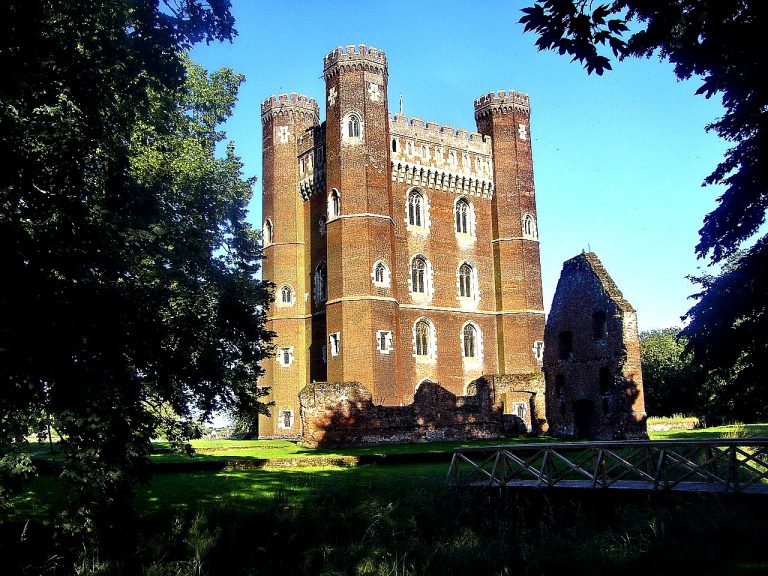
Tattershall Castle and Charles Brandon, Duke of Suffolk
Cover image via Wikimedia Commons courtesy of Tanya Dedyukhina via Wikimedia Commons Creative Commons Attribution 3.0 Unported Tattershall Castle and its history…
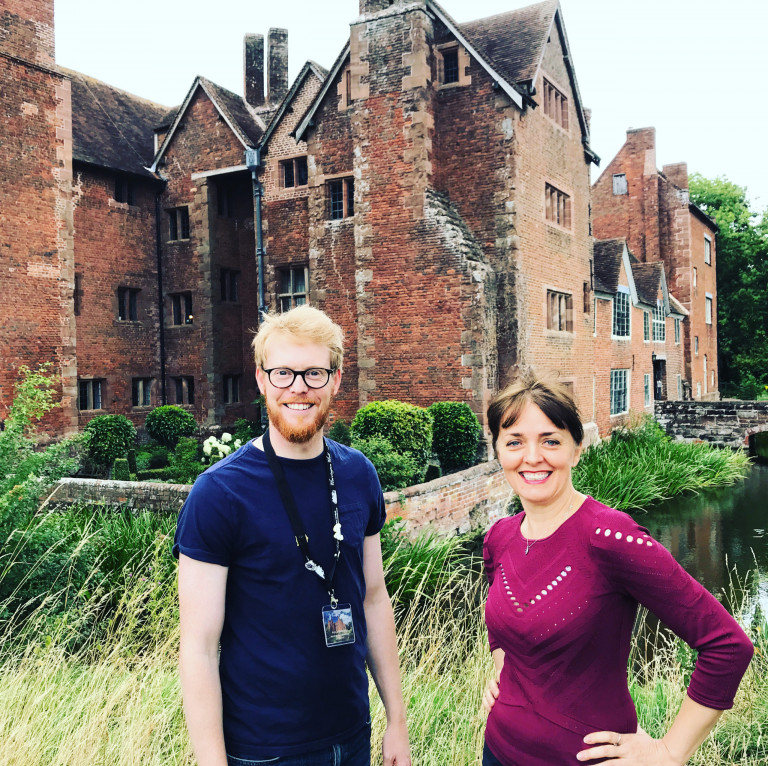
Harvington Hall: House of Secrets
If you want to explore a Tudor ‘house of secrets’ then the subject of today’s blog, Harvington Hall in Worcestershire,…
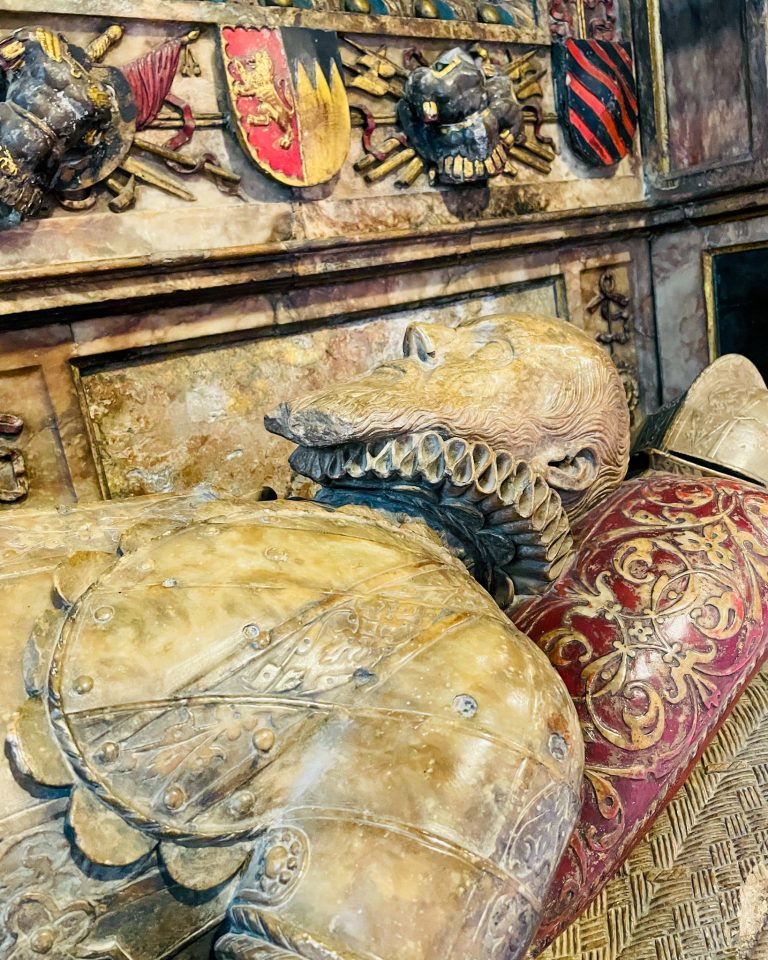
George Talbot, 6th Earl of Shrewsbury
Dear Time Traveller, This content is restricted to paid members of my membership site: The Ultimate Guide to Exploring Tudor England….
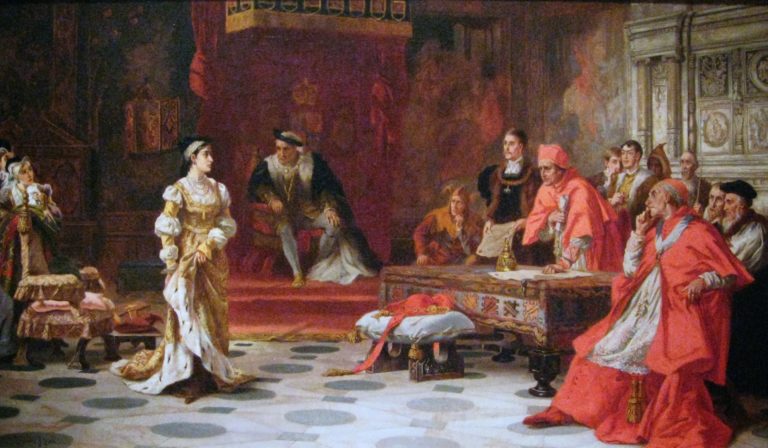
Blackfriars: The Very Public Stage for a Right Royal Row
It is a day of seismic importance, 21 June 1529. Many have gathered here alongside you in the Parliament Hall…
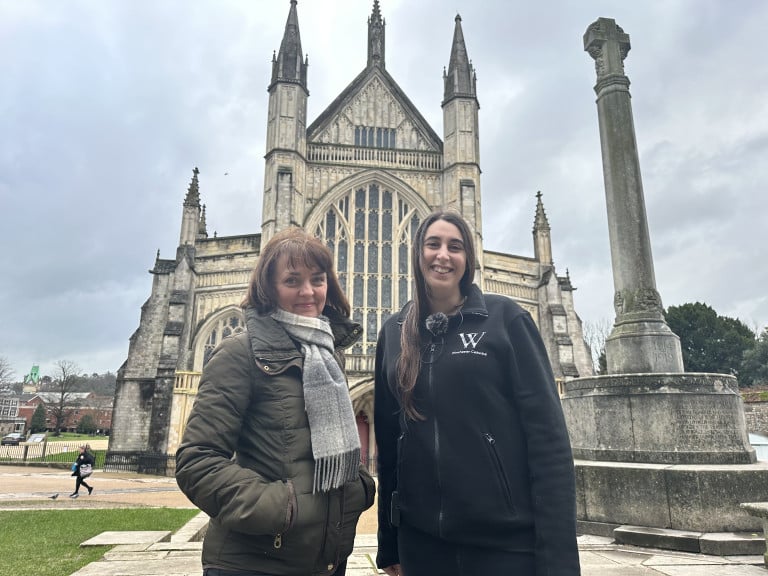
Winchester Cathedral & Its Noble Tudor History
In this episode, I head to the county of Hampshire in southern England.
I’m joined by Aisha Al-Sadie, Learning and Heritage Officer at Winchester Cathedral. We tour this incredible building and stand in the exact same places where important Tudor events unfolded.
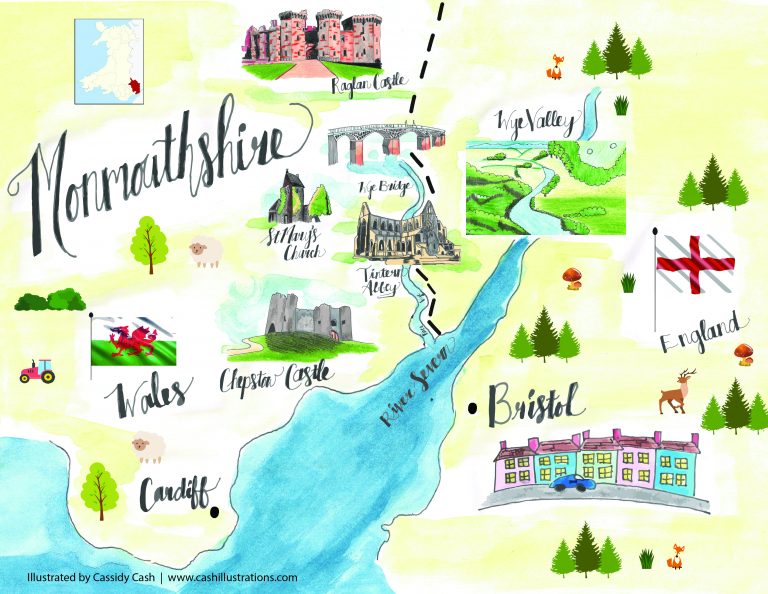
A Tudor Weekend in Monmouthshire
Monmouthshire in South East Wales is a delightful area to visit. Two locations included in this itinerary are in the Wye Valley, just inside the Welsh border, in an area considered to be of outstanding natural beauty.
This two-day interary will take you to visit two fabulous castles and a ruined abbey. Chepstow Castle has deep roots in early medieval history, while Raglan was created as luxurious a palace-fortress during the fifteenth century by the powerful Herbert family. It’s connections to Henry VII make it a must-see location for anyone interested in early Tudor history. Finally, you can drive or walk to the idyllic Tintern Abbey, renowned for the beauty of its location, adjacent to the River Wye.
So, let us go exploring three wonderful Welsh locations…
- Pingback: Anne Boleyn's Coronation Procession | The Tudor Travel Guide
- Pingback: The Field of Cloth of Gold: Henry VIII's Spectacular Temporary Palace | The Tudor Travel Guide
- Pingback: Eltham Palace: London's Royal Nursery | The Tudor Travel Guide
- Pingback: Calais – a bed of Tudor roses for Anne Boleyn….? – murreyandblue
- Pingback: The Tudor Travel Guide's '12 Days of Christmas' - The Tudor Travel Guide
- Pingback: The Forgotten Years of Anne Boleyn: The Court Of Savoy - Margaret Of Austria’s Luxury Palace - The Tudor Travel Guide
Leave a Reply Cancel reply
Your email address will not be published. Required fields are marked *
The Good Life France
Everything You Want to Know About France and More...
Some of the best places to visit near Calais on a day trip
- Janine Marsh
- Nord-Pas de Calais

On a day trip from Dover to Calais or Dunkirk, you can easily discover the authentic and beautiful countryside, stunning villages and glorious beaches of the Opal Coast. We think one day definitely isn’t enough to enjoy all the charms of the far north of France but here are a few of our favourite things…
The Opal Coast
The Opal Coast, or Cote d’Opale in French, stretches 120km from just outside Dunkerque to Mers-les-Bains, Picardy on the border with Normandy. Along its route you’ll find sandy beaches, hidden coves, Jurassic rocks, dramatic dunes and craggy cliffs. Take the D940 coastal road towards Boulogne. Follow the winding road through the lush landscape of fields, which look like colourful quilts. And enjoy cliff top views – the White Cliffs of Dover can easily be seen on a clear day.

You’ll pass through little fishing villages where you can buy fresh fish from the door steps of the fishermens’ houses. You’ll spot tiny boulangeries and welcoming cafés, monuments and museums for this is a region with an ancient history.
Though there are dozens of places to stop, and you’re bound to find your own favourites, there are some spots that are very special. Here are some of the best along the route from just outside Calais to Le Touquet:
Audresselles

This humble fishing village is like an echo of the past. Here the fishermen still haul their catch onto the beach in traditional wooden boats called Flobards, and then park them in the street like cars. The air is pure and the quality of light which gives the Opal Coast its name make this place quite simply – very special. Here is where the great painter JM Turner admired the views before capturing this coast line on canvas.
The beach is pristine and rocky, little pools teeming with fish where kids can enjoy an old-fashioned net on a stick wade and wallow. There are plenty of very good restaurants round the market square – the perfect location for moules et frites and a glass of wine.
Wine and dine Audresselles
Push the boat out : The Marie Galante ( 173 Rue Edouard Quénu ) is one of the prettiest restaurants on this stretch of the coast and reflects the long history of sea-faring folk from this charming fishing village. It isn’t expensive and is run by sisters Godeleine and Béatrice Cuvellier, they serve the best of fresh fish including lobster landed by fishermen in the village. On a sunny day the terrace is delightful and when the famous breeze blows in from the sea, inside is cosy and welcoming.
Locals Love : La Retour des Flobards ( 58, rue Marin La Meslee ). Set in the main square, this is a charming restaurant with a maritime theme and serves local seafood, crabs, lobster, mussels etc.

Pickled in the past, the little town of Wimereux is one of those genteel, off the beaten-track seaside resorts that people can’t help falling in love with. Its colourful Belle Epoque style villas and quirky shops are alluring and charming. It’s a little faded but still an elegant town with hotels, bars and cafés.
Wine and dine Wimereux
Push the boat out : The Atlantic Hotel ( 6 Rue Notre Dame ) Indulge in a delectable meal created by the Delpierre father and son chefs. Awarded a Michelin Star for their Liègoise restaurant (upstairs) in February 2017 their food is fabulous and as you’d expect – largely fishy. Downstairs is the contemporary style bistro. Here you can enjoy a truly special three course meal that’s great value, including mouth-watering salmon smoked on site by the chef.
Locals Love : Le Sable Rouge (27 Digue de Mer). Traditional French cuisine, mussels and chips, pancakes and beer with friendly service and great sea views.
Boulogne-sur-Mer

The old town of Boulogne-sur-Mer is one of the secret gems of the north of France. Looking just like a film set, this historic town has played host to legions of would be invaders of Britain. Quite literally, as the soldiers of Julius Caesar camped here as did those of Napoleon Bonaparte. Enter the walled old town via one of the vast stone gateways and prepare to fall in love with its historic good looks. Nip into the UNESCO listed belfry to spot the cannon balls fired on the town by Henry VIII. Check out the incredible Basilica Notre Dame church with its Vatican style roof and painted ceilings. Then descend to the crypt, the largest in France and decorated by an ancient artist – it’s truly incredible.
Boulogne is home to 1,000 shops, 200 restaurants, five French markets a week and Nausicaa , the largest aquarium in Europe. Missing this world-class aquarium on a visit to the Côte d’Opale would be to miss a highlight of the region. “A close encounter with the sea” is how it styles itself and it’s an apt description. Home to 3,500 different animals including penguins and sea lions. There are engaging exhibitions as well as a stunning Coral Lagoon.
Wine and dine Boulogne-sur-Mer
Star restaurant: La Matelote ( 70 Boulevard Sainte-Beuve ), seafood heaven at this Michelin starred restaurant/hotel on the sea front near Nausicaa. A taste sensation awaits…
Push the boat out : Chez Jules ( 8 place Dalton ) is not expensive. A classic French brasserie where all the food is made on site from the bread to the chocolate. You’re likely to bump into the Mayor here as well as the market stall holders after they’ve finished work. They’re all enjoying the dishes of Chef Philippe Leleu “Master Restauranteur” in a convivial atmosphere.
Locals Love : Le Chatillon ( 6 rue Charles Tellier ). It’s a little bit off the beaten track in the Capécure fishing quarter, and all the better for it. This restaurant opens at 04.00 in the morning for the fishermen who stop off for a hearty breakfast. But, you’re welcome to join them. It has an authentic atmosphere and a 98% lunch time fish menu. Don’t miss the popular “Parillada” mixed grilled fish and seafood marinated in garlic and olive oil. Check the website for opening times (le-chatillon.com)
Le Touquet Paris-Plage

The ”Monaco of the north” is a swish and swanky seaside resort. It’s the secret ‘get away from it all’ destination of Parisians as well as Brits in the know. It’s a taste of France that is hard to beat with its long golden sandy beaches and pretty Belle Époque villas. There are gourmet shops, fabulous restaurants, great golf courses, horse riding, tennis – I could go on and on. For a small seaside resort, Le Touquet packs a big punch. Not only that, the town prides itself on holding hundreds of events all year round.
There are fabulous restaurants, chichi shops – think Paris style. And, a myriad of sports activities in the place that was once the jet set nirvana. Ian Fleming based his book “Casino Royale” on the local casino where Cole Porter tinkled on the pianos keys and Noel Coward entertained his friends. Sean Connery signed his first Bond contract here. This place was THE place to go and it retains its air of glitz, glamour and gorgeousness.
Wine and Dine Le Touquet
Push the boat out : Le Pavillon at the Westminster Hotel ( Avenue du Verger ). Run by French chef (with an English sounding name) William Elliott, who has one Michelin star. Le West, as it’s known to the locals, is an Art Deco dream building. It’s glamorous in that oh-so-French effortless way. In the elegant setting of the restaurant with its lovely terrace overlooking the iconic lighthouse of Le Touquet you’ll experience an impeccable fine dining experience where it’s all about the food. Relaxed and not remotely pretentious, welcoming and knowledgeable staff, expertly prepared dishes and skilled wine choices ensure this is completely faultless refined dining event.
Locals Love : Chez Perard ( 67 Rue de Metz ) is one of the greatest fish restaurants in France. Don’t take my word for it, ask Lord Alan Sugar, he flies his plane to the local airport regularly – just to eat here. The soup made at the restaurant is famous all over France. Order it from the menu and they’ll offer you a top up – they’re so proud of it. The food here is fabulous. Fresh oysters, sea urchins, salmon smoked on the premises and the best bouillabaisse outside of Marseille (in my opinion).
Fish and Chips : So-Fish ( 16 Boulevard de l’Impératrice, Etaples-sur-Mer )) is one of the best-kept secrets of the Opal Coast. It’s popular with Parisians who flock to this part of France for a tranquil break at their second home villas in Le Touquet. You’ll find So-Fish just across a pink granite bridge leading from Le Touquet to Etaples. This tiny little restaurant has been featured in Elle and Paris Match for its authentic and tasty fish and chips. Chef Sophie-Perrault uses only the freshest fish. She makes the crispiest batter and piquant tartare sauce, making this a stand-out stop off.
More on northern France
Montreuil-sur-Mer , walled town with an ancient footprint which inspired Victor Hugo to write Les Miserables… Cassel , the hilltop town where the Grand Old Duke of York marched his men! What to see and do in Dunkirk
Latest Posts

Make your savings in France work hard – so you work less

Confused about your move to France? Join the club!

What to see and do in Montauban, Lot Valley

Luxury villa rental French Riviera

Your own swimming pool in France

River boat and canal boat rental holidays in France
Related posts.

One of the best places to enjoy Autumn in France | Pas-de-Calais

Discover real Pas-de-Calais: heritage, history & heavenly beaches

Agincourt | The legends and a historic museum

What to see and do in Wimereux, northern France
Get updates and stay connected - subscribe to our newsletter.
Everything You want to know about france and more…
The Good Life France is the leading independent website about all things French from travel to culture, gastronomy to property and practical guides & more…
Let's get social
Friday, May 24, 2024 3:13 pm (Paris)
- French Politics
- 2024 European elections
EU elections: Bernard Guetta, the Macron camp's left-wing representative
The former France Inter journalist, now a presidential majority candidate for the June 9 election, aims to prevent social-democratic voters from defecting to Raphaël Glucksmann, the Parti Socialiste's lead candidate.
By Robin D'Angelo
- Share on Twitter
- Share on Messenger
- Share on Facebook
- Share by email
- Share on Linkedin
Subscribers only

"Read it? Not even in your dreams!" a passer-by told Bernard Guetta, who implored him to take a look at the leaflet he was holding out to him. On the morning of Saturday, May 18, the number two on the French presidential majority's Renaissance (center) list for the European elections on June 9 was campaigning, handing out leaflets at the market in the port city of Calais in northern France. This was a first for the incumbent MEP, who had avoided the activity in 2019. The last time he handed out leaflets was in his high school days, in the late 1960s, when he and his comrades from the Jeunesses Communistes Révolutionnaires (Young Revolutionary Communists) campaigned against the Vietnam War.
Fifty years later, he was out in the street, defending Emmanuel Macron's policies to a young woman, a volunteer with Secours Catholique, who helps migrants. "Your track record as an MEP is dire for exiled people, especially here in Calais, where there have been 22 deaths this year," she said.
Then it was a listener from the France Inter radio station – where Guetta hosted a geopolitical segment for 27 years, from 1991 to 2018 – who recognized him: "Monsieur Guetta! I listened to you with so much admiration for so many years... And all this only to find out that, in fact, you're right-wing!"
"Why do you say I'm right-wing?" replied the former public service journalist. His interlocutor pointed to Macron's face on the leaflet he was holding. "You can't expect me to believe that he's not from the right! We voted for him to stop the Rassemblement National. And since then, he's done nothing but spit in our faces!" The woman in her 60s disappeared in a fit of rage, tearing up the program he was still trying to hand her.
'He's our very own Glucksmann'
"These people are far-left activists," said Brigitte Bourguignon, an adviser to the Pas-de-Calais region in northern France and former health minister, who was with him for the morning. Guetta, meanwhile, questioned "the psychological mechanism that leads to blaming someone for all the world's troubles," in this case Macron.

However, disillusioned Macron supporters are not only being recruited at the markets in droves. They can even be found in Guetta's inner political circle. In recent months, the Renew MEP has seen his good friend and former German MEP Daniel Cohn-Bendit break with Macronism. "Bernard [Guetta] is convinced that he's still doing important work where he is," Cohn-Bendit told Le Monde . "Personally, I think that France needs an environmentalist and socialist perspective which Raphaël Glucksmann is a part of."
You have 66.28% of this article left to read. The rest is for subscribers only.
Lecture du Monde en cours sur un autre appareil.
Vous pouvez lire Le Monde sur un seul appareil à la fois
Ce message s’affichera sur l’autre appareil.
Parce qu’une autre personne (ou vous) est en train de lire Le Monde avec ce compte sur un autre appareil.
Vous ne pouvez lire Le Monde que sur un seul appareil à la fois (ordinateur, téléphone ou tablette).
Comment ne plus voir ce message ?
En cliquant sur « Continuer à lire ici » et en vous assurant que vous êtes la seule personne à consulter Le Monde avec ce compte.
Que se passera-t-il si vous continuez à lire ici ?
Ce message s’affichera sur l’autre appareil. Ce dernier restera connecté avec ce compte.
Y a-t-il d’autres limites ?
Non. Vous pouvez vous connecter avec votre compte sur autant d’appareils que vous le souhaitez, mais en les utilisant à des moments différents.
Vous ignorez qui est l’autre personne ?
Nous vous conseillons de modifier votre mot de passe .
Lecture restreinte
Votre abonnement n’autorise pas la lecture de cet article
Pour plus d’informations, merci de contacter notre service commercial.
‘My home in France cost just £60k – my life would be unaffordable in the UK’
A former project manager from London says she “absolutely adores” her lifestyle in rural France , after buying a 21-room house for less than £60,000 in the early 2000s.
By her forties, Janine Marsh had lived most of her life in Bromley, in the south east of the city. In 2004, she travelled to Nord-Pas de Calais in northern France on a day trip with her husband and her father.
“The weather was miserable, really vile and all the restaurants were closed,” the 63-year-old told i . “But an estate agent in the village came up to us and asked, ‘Do you want a coffee?’”
Ms Marsh had no intention of buying anything, but the agent showed her their cheapest houses on offer and, on one of the last visits, “the sun peeked out from behind the clouds”.
“Standing in the garden, I saw a church spire and the church bells started ringing and the ducks next door started quacking,” she said. “It was fate.”
Selling their car to afford the deposit, Ms Marsh and her husband, Mark, bought the house and an acre of land for just €65,000 (£56,000).
It was an “absolute mess”, Ms Marsh said, but after years of renovating without the help of builders, the couple filled in the holes in the roof and covered the mud floor and now enjoy a sprawling property with four dogs and seven cats.
Even though she bought the house 20 years ago this month, Ms Marsh believes there are still “plenty of bargains” to be had in France, outside the capital.
Where New Caledonia is and why there's unrest in the French territory
“As long as you are prepared to get your hands dirty and do it up yourself,” she said. “France is three-and-a-half times the size of the UK, with the same population. It is not overcrowded.”
Healthcare is “phenomenal”, according to Ms Marsh, who was shocked when her GP apologised for booking an appointment the same afternoon she rang the surgery.
“Most of his French patients complain when they cannot be seen that same morning,” she said. “My kids in the UK usually have to wait weeks, they are usually better by the time a GP appointment is available.”
Despite living in a rural village of just 152 inhabitants, Ms Marsh can be in the UK in just one-and-a-half hours. “And the trains are cheap,” she added. “I can be in Paris in a few hours and then from there I go to Belgium, Luxembourg, Amsterdam, wherever.”
After buying their house, the couple split their time between France and the UK, with Ms Marsh working as a finance project manager and her husband continuing his job as a mortgage adviser.
She set up The Good Life France in 2012, a blog to keep in touch with friends and family. By 2019, when Britain left the European Union, her website was receiving more than a million visits a month and Ms Marsh decided to work as a full-time travel writer.
In the space of a few years, Ms Marsh and her husband went from city workers to growing vegetables, rearing chickens, and swapping their eggs for beer at the local bar. “You can always reinvent yourself if you work hard,” she said.
“I love the UK,” Ms Marsh added, “but my quality of life here is different.”
As well as using produce from her land, she shops at markets and the supermarket. While a weekly shop may not be much cheaper than in the UK, she says, the quality is markedly different. “There is a lot of local foods in the supermarkets, even the stuff in tins and jars are local food, and there is always a greengrocer.”
Ms Marsh said she is “absolutely” able to eat out more in France, compared to her friends in the UK. “Every other week, on a Friday we go to our local restaurant. It is like Cheers , everybody knows us there.”
For €25 (£21) a head, she has a three-course meal and two drinks. “The food is really good. I would not be able to afford the life that I live here in the UK.”
While she wants to keep on working for as long as possible, Ms Marsh has no doubt France will be the place where she grows old with her husband.
“I love my life in France and what it gives me,” she added. “The markets, the cheese, the people.
“I am British in my head but French in my heart.”

More From Forbes
Here's what to know about the paris 2024 olympic village.
- Share to Facebook
- Share to Twitter
- Share to Linkedin
The Olympic and Paralympic Village in Paris for the summer Olympic Games 2024.
Paris' Olympic village was designed to be more sustainable than any other Olympic village before, in that it provides 16,000 beds and 40,000 meals every day to both Olympians and Paralympians, all of whom can train within 20 minutes maximum of the site and can compete for Olympic medals within 30 minutes of where they sleep.
Where Is The 2024 Olympic Village?
The 2024 Olympic village is spread across three towns called Saint-Denis, Saint-Ouen and l'Ile-Saint-Denis in the northern part of Paris, about 6 miles (9 km) from the city center, on the banks of the river Seine.
It's situated on 53 hectares of land (about 330,000 square meters) that was formerly a mixture of industrial units and derelict buildings—what Le Monde called industrial wasteland. From July 18 onward, this site will house both the Olympians and the Paralympians and members of their sporting entourage, expected to total almost 15,000 and 9,000 athletes respectively. Both the Olympians and the Paralympians will use the same Olympic village.
Paris' Olympic village cost $1.85 billion to build and unsurprisingly, is the largest single-site construction project in France.
What Are Accommodations Like In Paris' Olympic Village?
Why is chief boden leaving chicago fire eamonn walker s exit explained, biden vs trump 2024 election polls biden leads trump by only single digits in new york latest survey shows, here are the major allegations against sean diddy combs as cassie ventura breaks silence on attack video.
The village has been designed with one thing in mind: to be able to house local residents in the same buildings, with the minimum of refits necessary, after the athletes leave.
What's more, as Paris is trying to be one of the most sustainable Olympic games ever, it's crucial that the village conforms to the 2016 Paris Agreement in terms of meeting climate change goals—the village meets all the needs of a modern neighborhood with the right mix of supermarkets, green spaces, offices, health providers and transport—two schools are being built in the neighborhood and 6,000 residents will move in.
For the athletes, there's a giant canteen seating 3,500 people that'll rotate its menu every eight days, meeting the dietary requirements of all athletes and staff— NBC reports that there will be a French spin and athletes can expect lots of omelettes and, if the training diet allows, pastries. It's expected that 40,000 meals will be served daily and there will also be lots of 'grab and go' points where athletes can eat on the fly, but there will be no alcohol provided.
They'll be a shopping mall including a hairdresser's and a post office, as well as a 24-hour fitness centre and a place to chill out with everyone else. As it's been designed to conform to 2050 European cities, there will be plenty of water features and greenery (which are intended to future-proof against any impacts of climate change). Low-carbon concrete has been used and all buildings below 28 meters in height are made out of wood—75% of construction materials are recycled and the village has been designed to withstand the very hot summers planned to 2050 and beyond; the floors will provide underfloor cooling, for instance.
Athletes' rooms are functional and accessible.
The athletes are in individual rooms that are far from fancy and that might look at home across any standard accommodation in any city worldwide, although none have kitchens. Interestingly, Paris is using the same cardboard beds that made their debut at Tokyo 2020, which were much derided as being 'anti-sex', something that wasn't encouraged because of the covid pandemic. The Olympic Village Director, Laurent Michaud, confirmed to Sky News that the anti-intimacy ban from Tokyo has been lifted for Paris 2024. 16,000 of these beds, made by a company called Airweave, were delivered to the village in Paris on 11 May.
Shuttle buses and electric bikes will carry athletes around the village with 100% of them training within a 20-minute distance from the very large site and 80% will train within the site itself.
Paris won the right to host the 2024 Olympic Games by focusing its legacy on regeneration and sustainability—this part of Paris is one of the most socially-deprived in the country, with higher than average unemployment and an ethnic composition of its local population that regularly suffer from increased discrimination, reports The Guardian .
Paris' Olympic village looks like any European riverside housing and will house local residents ... [+] after the Games finish.
The Paris Olympics also won the rights because 95% of events are being held using existing sports infrastructure—80% of investment is in Seine-Saint-Denis, including the luxurious Aquatics Centre, that will benefit local residents for years to come. The only other site that has been built to hold the sporting events is an 8,000-seat arena, again in the north, for badminton and rhythmic gymnastics.
In the autumn, construction workers will move in to remove bathroom blocks and room partitions, then kitchens and flooring will be added and the paintwork touched up, before its new residents will excitedly take ownership.

- Editorial Standards
- Reprints & Permissions
Join The Conversation
One Community. Many Voices. Create a free account to share your thoughts.
Forbes Community Guidelines
Our community is about connecting people through open and thoughtful conversations. We want our readers to share their views and exchange ideas and facts in a safe space.
In order to do so, please follow the posting rules in our site's Terms of Service. We've summarized some of those key rules below. Simply put, keep it civil.
Your post will be rejected if we notice that it seems to contain:
- False or intentionally out-of-context or misleading information
- Insults, profanity, incoherent, obscene or inflammatory language or threats of any kind
- Attacks on the identity of other commenters or the article's author
- Content that otherwise violates our site's terms.
User accounts will be blocked if we notice or believe that users are engaged in:
- Continuous attempts to re-post comments that have been previously moderated/rejected
- Racist, sexist, homophobic or other discriminatory comments
- Attempts or tactics that put the site security at risk
- Actions that otherwise violate our site's terms.
So, how can you be a power user?
- Stay on topic and share your insights
- Feel free to be clear and thoughtful to get your point across
- ‘Like’ or ‘Dislike’ to show your point of view.
- Protect your community.
- Use the report tool to alert us when someone breaks the rules.
Thanks for reading our community guidelines. Please read the full list of posting rules found in our site's Terms of Service.
Macron says French troops will stay in New Caledonia ‘as long as necessary’
France’s president is visiting the Pacific territory where electoral reform plans have fuelled the worst unrest in more than 30 years.

French President Emmanuel Macron has said French soldiers will remain in New Caledonia “as long as necessary” after more than a week of unrest triggered by French plans to change electoral rules in the Pacific island territory.
Macron arrived in New Caledonia’s capital Noumea on Thursday, amid continuing protests over voting reforms the Indigenous Kanak people say would dilute their vote and undermine their struggle for independence.
Keep reading
France blames azerbaijan for new caledonia violence: unpacking their spat, french forces clear new caledonia roadblocks as official vows to end unrest, macron heading to new caledonia as france deploys more troops amid unrest.
The reforms would allow French people who have lived in New Caledonia for 10 years or more to vote in New Caledonia’s provincial elections.
About 3,000 soldiers have been sent from Paris since the violence began and could stay until the Olympic Games in Paris, which begin on July 26, Macron said.
Six people, including three young Kanaks, have been killed and about 280 people arrested since the protests broke out and a state of emergency was declared.
Macron observed a minute of silence for the people who had been killed and said if roadblocks and barricades were removed, he would be opposed to extending the state of emergency.
The French president also met the pro-independence President of the Government of New Caledonia Louis Mapou and the President of Congress Roch Wamytan, in a meeting at the residence of France’s high commissioner to New Caledonia in Noumea on Thursday.
Macron flew about 17,000km (10,500 miles) from mainland France to reach Noumea and was expected to remain in New Caledonia for around 12 hours.
Demonstrators waving New Caledonian flags lined the streets as the French president’s convoy made its way along the newly reopened road from the international airport to Noumea.
“I don’t know why our fate is being discussed by people who don’t even live here,” said Mike, a 52-year-old Kanak at a roadblock north of the capital, on the eve of Macron’s arrival.

About 90 barricades put up by protesters had been cleared by heavily armed police and paramilitaries, but new barricades were still appearing the night before Macron arrived, according to the Reuters news agency.
Jimmy Naouna, from the Kanak and Socialist National Liberation Front (FLNKS) of New Caledonia, said the pro-independence political party had called for protesters to remove the roadblocks, and urged Macron to drop the electoral reform plan.
“We are expecting if [Macron] travels to Kanaky, he will make some strong announcement that he is withdrawing this electoral bill, but if he is just coming here as a provocation, that might just turn bad,” Naouna said ahead of the French president’s arrival, using the island’s Indigenous name.
The Kanaks make up about 40 percent of the slightly more than 300,000 people who live in New Caledonia, which lies between Australia and Fiji in the Pacific Ocean.
In 1998, France agreed to cede the territory more political power and to limit voting in New Caledonia’s provincial and assembly elections to those who were residents of the island at the time, under the so-called Noumea Accord.
About 40,000 French citizens have moved to New Caledonia since 1998, and the changes expand the electoral roll to include those who have lived in the territory for 10 years.
The Noumea Accord also included a series of three independence referendums, with the last one taking place in December 2021 at the height of the COVID-19 pandemic. Pro-independence groups boycotted the vote, which backed remaining in France, and rejected the result .
Last week, French Interior Minister Gerald Darmanin told the TV channel France 2 that Azerbaijan, alongside China and Russia, were “interfering” in New Caledonia.
“I regret that some of the Caledonian pro-independence leaders have made a deal with Azerbaijan,” Darmanin claimed.
Watch CBS News
France's Macron flies to New Caledonia in bid to quell remote Pacific territory's "unprecedented insurrection"
May 23, 2024 / 9:37 AM EDT / CBS/AFP
Noumea — France's president held a flurry of meetings with local representatives in the restive Pacific territory of New Caledonia on Thursday, urging calm after deadly rioting, and vowing thousands of military reinforcements will stay in place to quell what he called an "unprecedented insurrection."
Emmanuel Macron arrived Thursday in the capital Noumea after a 24-hour flight to seek ways to end more than a week of looting, arson and clashes that have left six people dead and hundreds injured. The unrest erupted over a French voting reform plan that indigenous Kanaks say will dilute their voice.
As he exited the plane at Tontouta International Airport, the French leader told reporters his "absolute priority" is "a return to peace, calm, security."

He was expected to spend about 12 hours on the ground.
What is the New Caledonia unrest about?
France has ruled New Caledonia since the 1800s, but many indigenous Kanaks still resent Paris's power over their islands and want fuller autonomy or independence.
The archipelago's deadliest unrest in four decades was sparked by French plans to give voting rights to thousands of non-indigenous long-term residents, something Kanaks say would dilute the influence of their votes.
The voting reform plans have "breached the contract of trust" with Paris, said Victor Gogny, president of New Caledonia's senate — a consultative body that weighs in on issues affecting Kanaks.
Since May 13, separatists have thrown up barricades that have cut off whole neighborhoods and the main route to the international airport, which remains shuttered. People of French and other origins have blocked off streets in their own neighborhoods in response.

It was a "totally unprecedented movement of insurrection," Macron said, adding that "no-one saw it coming with this level of organization and violence."
Nightly riots have seen scores of cars, schools, shops and businesses burned.
French authorities have imposed a state of emergency, placed separatist leaders under house arrest, banned alcohol sales and sent around 3,000 troops, police and other security reinforcements to quell the turmoil.
But despite Macron's remark suggesting the unrest was unprecedented, CBS News' Elaine Cobbe, in Paris, says there have been repeated insurrections and protests over French rule for decades — the deadliest likely coming in 1988, when 21 people were killed during a lengthy hostage-taking.
The indigenous Kanaks have long fought against the French colonization, which has since the 19th century drawn a major influx of French and other Europeans. Kanaks now account for only 41% of the population, and that's why many don't want the new law.
Opponents fear it would effectively tighten Paris's control over the Pacific archipelago.

Several referenda seeking independence have all failed, and many Kanaks believe that's at least in part due to the majority of voters not being Kanak and h0aving stronger ties to the French mainland.
Macron has ruled out going back on the result of the referendums, saying peace could not come at the cost of ignoring the will of the people or "somehow denying the road that has already been taken."
Where is New Caledonia, and why is it so important?
The fact that Macron is willing to make such a long journey just weeks before key European elections may show just how high the stakes are.
His visit began with a minute of silence for the dead and hours-long talks with anti-independence elected officials, before visiting a police station to thank security forces.
"By the end of the day" there would be "decisions" and "announcements" about next steps, Macron promised - while adding that he could extend his stay if needed.
Security forces would also "stay for as long as necessary, even during the Olympic and Paralympic Games ," to be held in Paris in July-August.
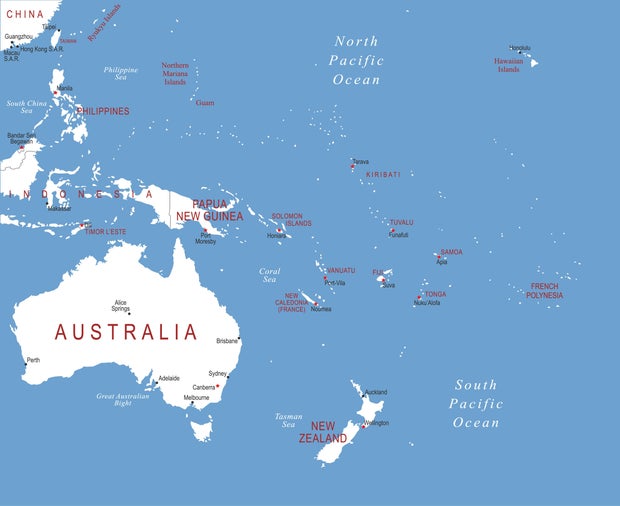
Much closer to Australia than Europe, New Caledonia is 10,500 miles from the French mainland but remains both part of France and a strategic outpost in an increasingly contested region.
China, the United States, New Zealand, Japan, Arab Gulf states and France are vying for influence across the South Pacific — seeing it as crucial geopolitical real estate.
New Caledonia is also attractive as one of the world's largest nickel producers, with up to 30% of global reserves.
Tension on the streets as tourists look for a way out
Macron last visited New Caledonia in July 2023, on a trip that was boycotted by Kanak representatives.
But leaders of all pro-independence parties joined Thursday's meeting with Macron, his office said, including top movement the Caledonian Union (UC) and the CCAT collective that has organized months of protests.
Out on the streets, AFP correspondents saw Kanaks still manning reinforced roadblocks on the day of Macron's visit, flying pro-independence flags and displaying protest banners against the electoral reform.
The draft law "doesn't exist to us any more, since people have died, it's no longer even up for discussion," said Lele, a 41-year-old mother in favor of independence.
But a heavy police presence was sheltering some semblance of normal life in central Noumea, where many shops had reopened to customers and long lines formed outside bakeries.

Hundreds of tourists from Australia and New Zealand have begun to flee the turmoil, although hundreds more remain trapped.
There was anger Thursday that Macron's heavily secured visit had put further repatriation flights on hold.
Australia's foreign ministry emailed travelers to say there would be no flights Thursday, a situation New Zealand's Foreign Minister Winston Peters called "frustrating."
Efforts to reopen the international airport for commercial flights have been repeatedly delayed. But operators hope connections will resume on Saturday.
- Pacific Ocean
- Emmanuel Macron
- New Caledonia
More from CBS News

More than 100 feared dead in massive landslide in Papua New Guinea

China holds major war games as "powerful punishment" for Taiwan

Man fined after attempt to "body slam" orca in New Zealand

Bail terms for teen in fatal drunk driving crash changed after outcry

COMMENTS
A first-timer's guide to visiting Calais, France. There is so much more to the small town of Calais in northern France than its port where cross-Channel ferries join the dots between dazzling white-chalk cliffs in Dover and the Côte d'Opale, and Brits on booze runs stock up on "cheap" French wine at hypermarchés to drink back home.
Most agree that the belfry's chimes are among the most beautiful in France. 2. Burghers of Calais. Source: Marc Bruxelle / Shutterstock. Burghers of Calais. In front of the Town Hall on the edge of the Parc Saint-Pierre is one of Auguste Rodin's best-known works.
Calais, France. Reasons to Visit Calais. Museums It's a port city with a few good museums and landmarks to see. Check out the Town Hall, Burghers of Calais, La Cité de la Dentelle et de la Mode, and Musée de la Guerre de Calais, as well as the Calais Lighthouse. Food The region is known for its mackerel, andouillette sausage, and endive and ...
The town hall is worth a visit and the gardens are lovely we love going there if you can go inside you can go up to the... 4. The Burghers of Calais. 349. Monuments & Statues. By ToujoursLaRoute. Just in front of the monumental City Hall, this is a replica from a very famous work of Rodin.
Calais is the perfect destination for a weekend, day trip or city break. There's plenty to do and see from museums to memorial sites. The city beach, Calais la Plage (Calais by the sea) has had a massive makeover and is now one of the finest seaside destinations on the already gorgeous Opal Coast of northern France.
Calais. France, Europe. A mere 34km from the English port of Dover (Douvres in French), Calais makes a convenient launching pad for exploring the majestic Côte d'Opale. Beaches extend around the town centre, whose handful of museums are well worth a look.
Cité Internationale de la dentelle et de la mode de Calais. 10 a.m.: Start with a trip to the Lace Museum, officially the Cité Internationale de la dentelle et de la mode de Calais (International Centre of Lace and Fashion), housed in a former lace factory in the area of Calais that dominated lace making in France in the 19 th and 20 th centuries. You get a fascinating walk through the ...
5.) Église Notre-Dame de Calais. Built in the 12th century, this Roman Catholic parish church is a work of classic Tudor architecture. The lovely well-kept gardens and interior design are well worth a visit if you're in town, even if the building is only small. 6.) Museum of Fine Arts in Calais.
Calais possesses direct rail links to Paris, 148 miles (238 km) to the south. More than 10 million people visit Calais annually. From medieval times, English companies thrived in Calais. Calais was a particularly important centre in the production and trade of wool and cloth, which outweighed the costs of maintaining the town as part of England.
Calais ( Dutch: Kales) is a city of 73,000 people (2019) in the Hauts-de-France region of France. It is the closest point on the European mainland to England; Dover lies across the English Channel ( La Manche) just 32 km (20 miles) away. The town has a major cross-Channel ferry port, and the French entrance to the Channel Tunnel is nearby.
La Coupole. La Coupole. La Coupole Rocket. La Coupole Bunker. 45 minutes' drive from Calais is one of the most impressive remnants of the Second World War in Europe. La Coupole is a huge domed bunker, built by slave labour in 1943-1944, as a launching site for V2 rockets aimed at London.
Located in Calais Sud, Calais Town Hall is a glorious over-the-top building, dominating the main square. It was built between 1911 and 1925 in flamboyant 15 th -century Flemish style though it looks much older. It stands in its own space, with Rodin's famous Six Burghers of Calais statue in the gardens at the front.
Le Phare - The Lighthouse Calais. The 58m high lighthouse built in 1848 can be seen from miles around. Climb the 271 steps and take in the panoramic views from its platforms. See the Phare de Calais website for opening times, exhibitions and ticket prices Web: www.pharedecalais.com.
The Calais Beach. pic by tz1_1zt. by-sa 2.0. Calais Beach is a wide stretch of sand located on the northern coast of France, overlooking the Strait of Dover. What to see or do: Visitors can enjoy a relaxing walk along the beach, have an ice cream or a drink while watching the sunset over the sea.
To make your life easy, we have recommended the top 10 things to do in Calais, France, below. Read Also: 1. Admire the Renaissance revival style of Calais Town Hall. View this post on Instagram. A post shared by James Harrison (@jh389) The Town Hall in Calais, located in the Belgian and French border, and is a UNESCO site.
Things to Do in Calais. We perform checks on reviews. 1. La Cite De La Dentelle Et De La Mode De Calais. The examples of costumes dating back to Madam de Pompadour was such a bonus and also the up to date costumes were... 2. Calais Beach. The beach is clean with very attentive life guards. The facilities are clean and tidy and plenty of places ...
The mayor of Calais has outlined plans to create duty-free stores throughout the town to take advantage of Brexit - but there are actually lots of reasons to visit this lovely northern French town ...
The Calais Dragon. Calais has a dragon constructed of steel and sculpted wood with astonishing dimensions: 25 meters in length, 12 meters in height, and 5 to 17.5 meters in width, weighing 72 tons. It can spew water, fire, and smoke and cruise down the shore at a pace of 2.48 mph (4 km/h). The-Calais-Dragon.
Occupied by the Spanish (1596-98), it was returned to France by the Treaty of Vervins. A part of Napoleon 's army for the invasion of England camped there in 1805. During World War II, Calais was a main objective in the German drive to the sea in May 1940; for three months before its liberation (September 1944), it was a base for launching ...
Generally speaking, Calais is an accessible town, with free car parks and shuttles available to make your visit to Calais easier whatever the season. holiday rentals near calais If you are looking for a hotel in Calais or a holiday rental near Calais we advise you to stay in Evancy residences.
It is worth a visit; just knowing that many kings and queens of France and England have prayed here in centuries gone by. Also, of particular note to the Tudor enthusiast, is the sixteenth-century tomb of John Bourchier, 2nd Baron Berners, who is buried in the church choir. Baron Berners was the Lieutenant of Calais until he died in 1533.
The Calais de Dragon. The city of Calais is fortunate to welcome a dragon made of steel and sculpted wood with impressive dimensions: its length is 25 metres; its height is 12 meters and its width is from 5 to 17.5 meters for a weight of 72 tons. It moves on the coast with a speed of 2.48 mph (4 km/h) and it can spit water, fire and smoke.
Then descend to the crypt, the largest in France and decorated by an ancient artist - it's truly incredible. Boulogne is home to 1,000 shops, 200 restaurants, five French markets a week and Nausicaa, the largest aquarium in Europe. Missing this world-class aquarium on a visit to the Côte d'Opale would be to miss a highlight of the region.
France is considering extending a 12-day state of emergency, which has led to a night-time curfew, house arrests of suspected ringleaders, as well as a ban on TikTok, the sale of alcohol, carrying ...
The former France Inter journalist, now the presidential majority candidate for the June 9 election, aims to prevent social-democratic voters from defecting to Raphaël Glucksmann, the Parti ...
One tip: download another Harry Potter before the return. Drive time from Calais: 8h 30m. How to do it: Eurocamp (01606 787125; eurocamp.co.uk. ) has six nights, in a safari tent sleeping four ...
A former project manager from London says she "absolutely adores" her lifestyle in rural France, after buying a 21-room house for less than £60,000 in the early 2000s. By her forties, Janine ...
I write about travel and culture. Following. May 23, 2024, 02:35am EDT. Share to Facebook; Share to Twitter; Share to Linkedin; ... is the largest single-site construction project in France.
Macron says French troops will stay in New Caledonia 'as long as necessary' France's president is visiting the Pacific territory where electoral reform plans have fuelled the worst unrest in ...
Deadly unrest on France's far-flung Pacific territory of New Caledonia has drawn a hasty visit by President Emmanuel Macron.